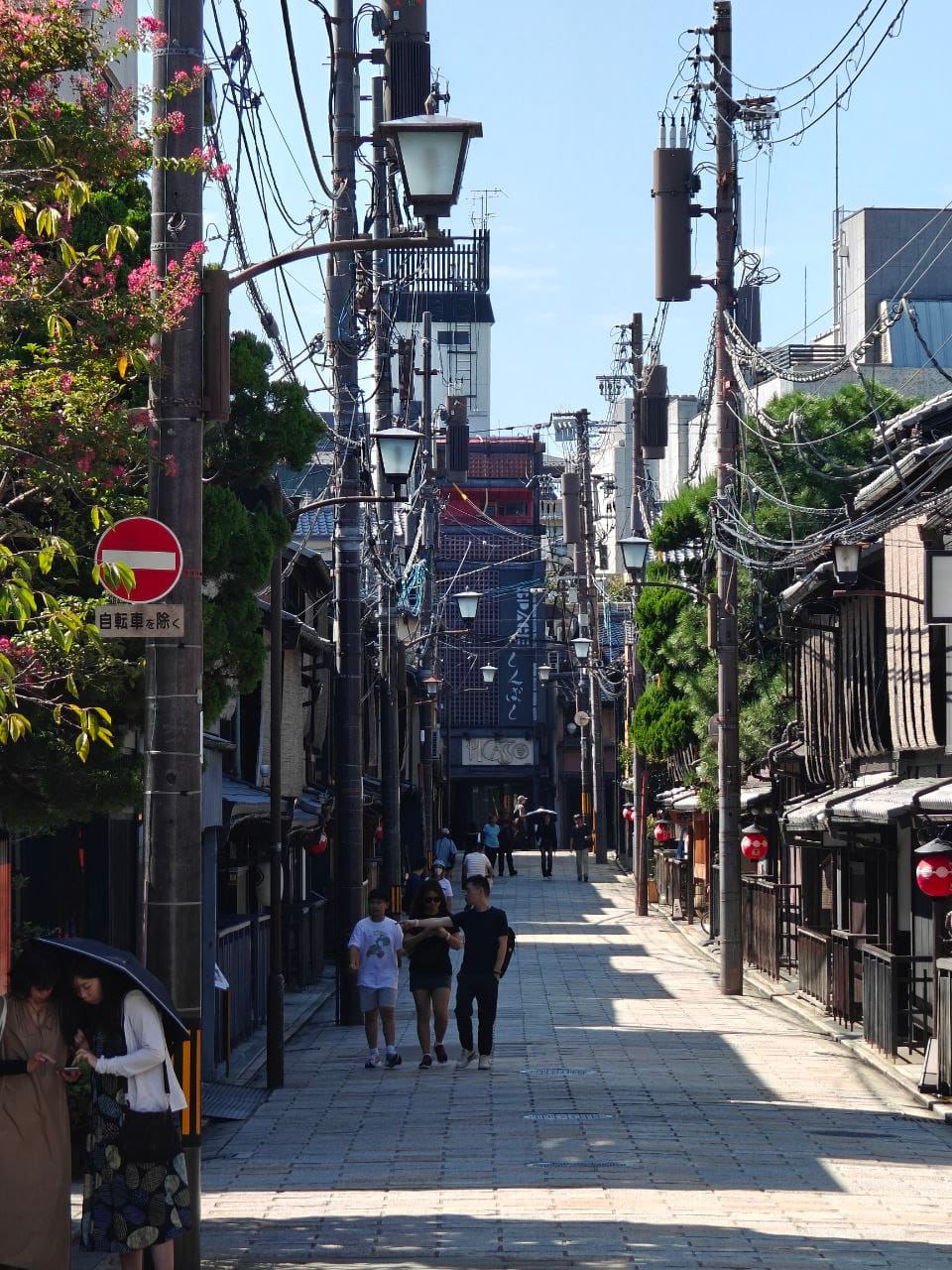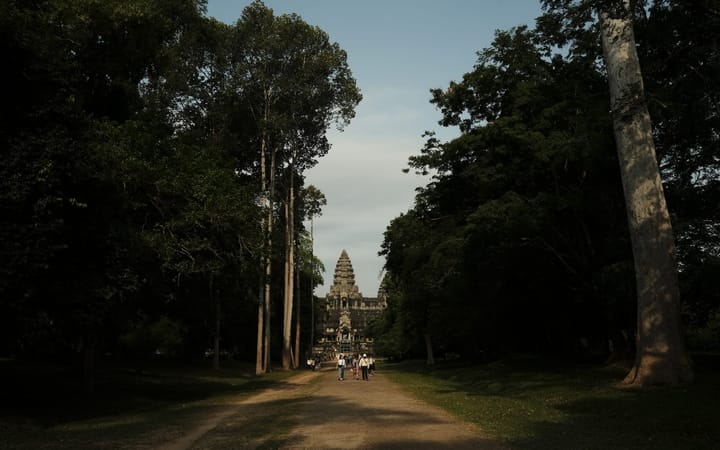Trip review of Kyoto: A worthy side trip to Otsu
Otsu, beside Kyoto city, is a hidden gem at Lake Biwa, definitely deserving of a day trip or even a night in this lakeside city.

This trip was completed in September 2025.
Kyoto, with its famed temples and historical streets, will never fall under the radar of international tourists. The current over-tourism phenomenon has led many to embark on side trips to neighboring cities like Nara and Uji. However, during this trip to Kyoto, we discovered that Otsu is likewise a hidden gem, definitely deserving of a day trip or even a night in this lakeside city.
Below are notable highlights of our trip, from both the touristy side of Kyoto to the tranquility of Lake Biwa.
Airport Lounge: Airside Lounge (Kansai International Airport)
Rating 7.7/10
International travelers to Kyoto is likely to arrive at or depart from Osaka's KIX airport for their trips. The airport network to various cities within the Kansai region is widely developed, from express trains to limousine buses. From 2023, the HARUKA rail service was also able to stop at Osaka Station (near the newly-developed Grand Green Osaka progressively being opened since 2025), in between Tennoji and Shin-Osaka, improving the connectivity for travelers.
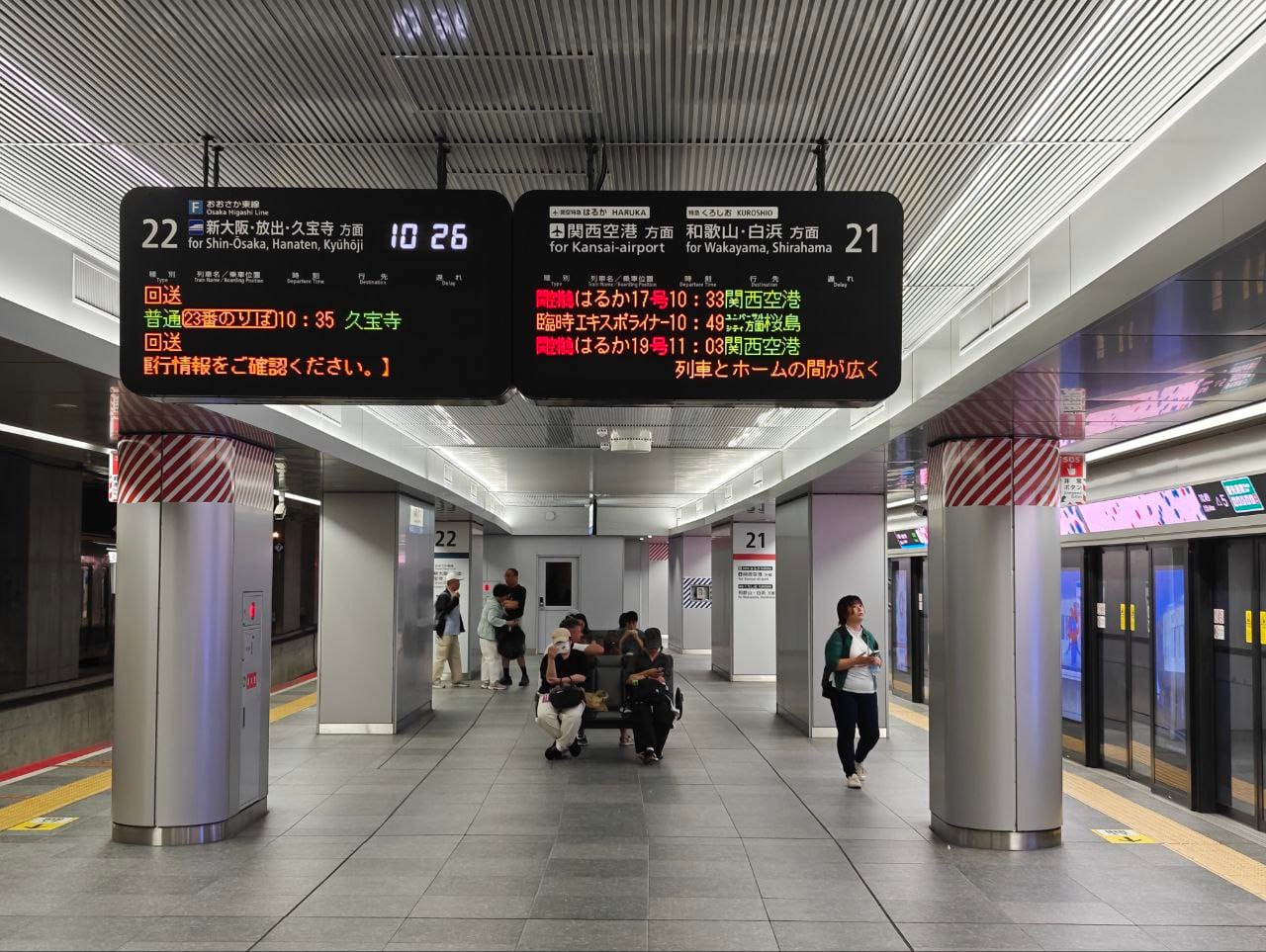
Back to Kansai International Airport, there are several lounges such as Lounge Rokko spread around the terminal. Following the major renovation of Terminal 1 (the grand opening happened in March 2025), many of KIX Lounges are now refreshed. The particular lounge we visited is called Airside Lounge, which can easily be confused with the generic term 'airside' lounge referring to all the lounges after airport immigration area.
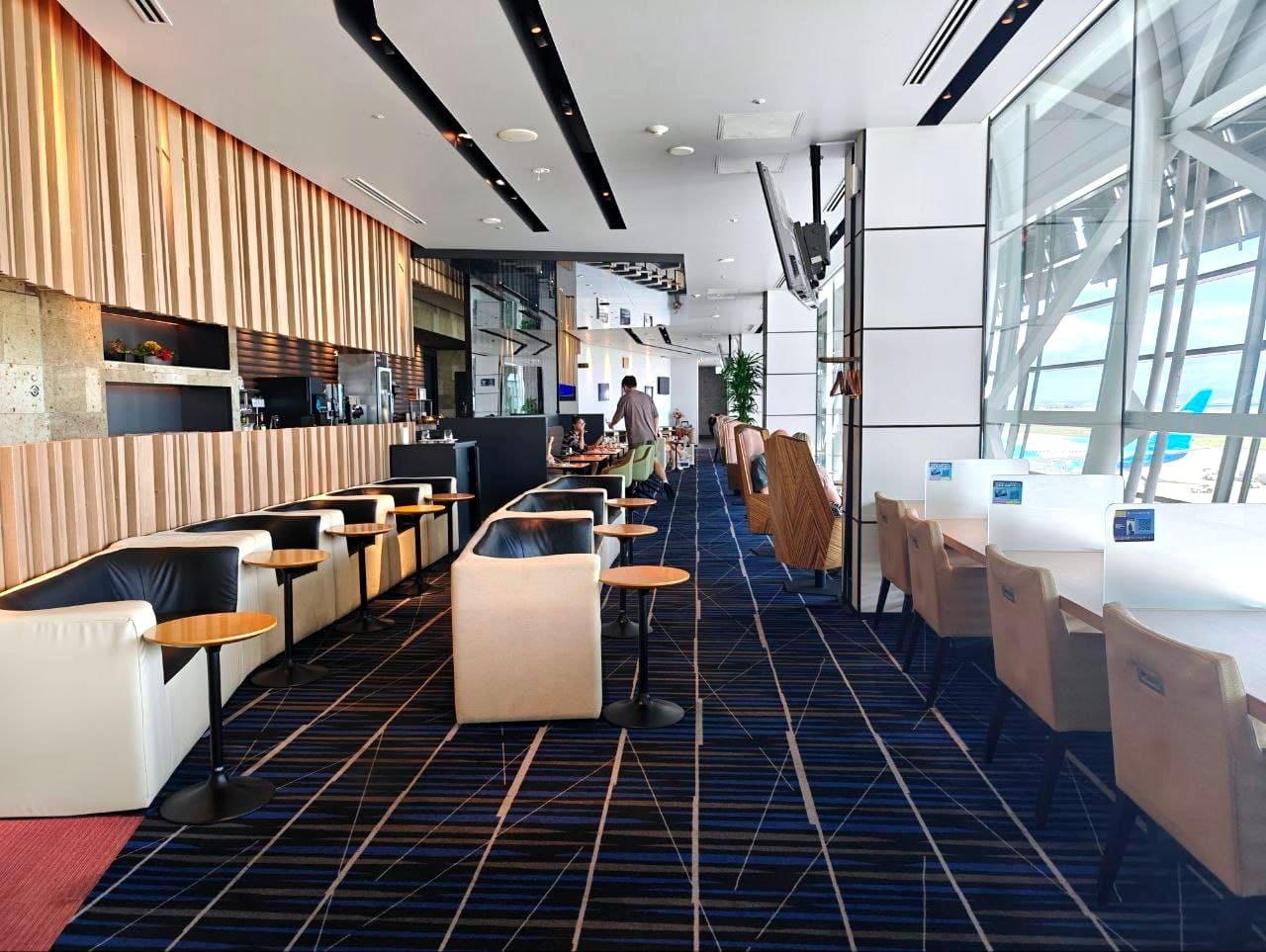
There are not much online reviews after this major airport renovation, but from our deduction, the new KIX Lounges are for airline partners, while contract lounges like Rokko and Kongo are for the Priority Pass network. On the other hand, this Airside Lounge does not accept Priority Pass holders and it is categorised as 'Membership' lounge by the airport. The four difference categories of lounges ('Airline', 'Membership', 'Credit Card', 'Walk-In') can be found on Kansai Airport website here.
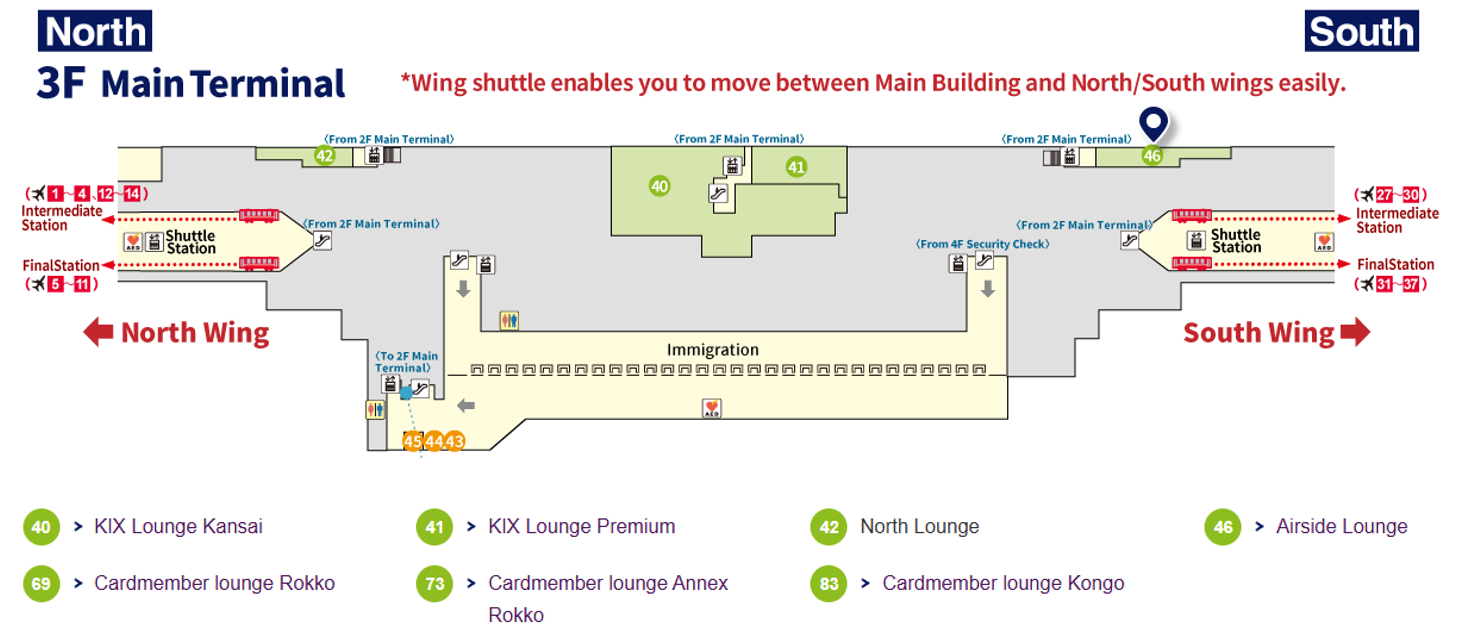
Tucked in one corner on the third floor of the Main Terminal, this lounge has runway views similar to North Lounge, but is bigger in terms of size and much less crowded. Selection of food and drinks is also decent, with a mix of light bites and hot dishes buffet-style. However, it is rather simple fare such as Japanese curry rice and miso soup that comes in instant packaging. Alcohol selection is better, with red/white wine, whisky, sake, and umeshu. When we were there in the afternoon, there was barely anyone. Personally, it is the peace and quiet that scored well for this lounge.
Activity: Otsu and Lake Biwa
Rating 8.0/10

Otsu is a port city on the shores of Lake Biwa, the largest lake in Japan. Long overshadowed by its more popular neighbours like Osaka, Kyoto, Nara and Kobe in the Kansai region, Otsu actually has a rich history (being the last resting stop for traders and merchants traveling to Kyoto from Tokyo known as the Tokaido road). A scenic Keihan rail which passes through a small mountain valley connects Kyoto to Otsu, making it a perfect day trip with a journey time of below 30 minutes in most instances.
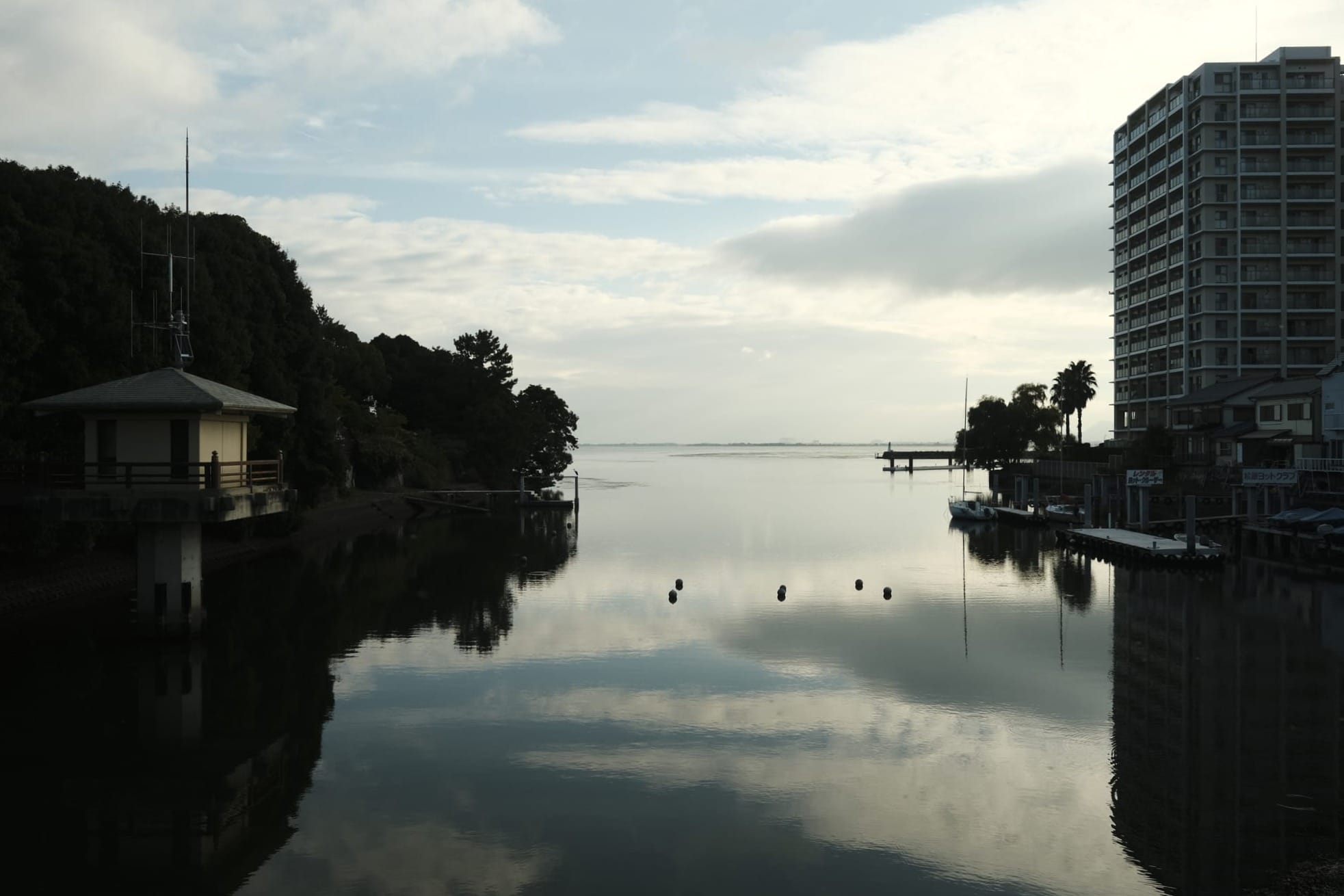
While a tourist cruise at Lake Biwa is certainly lovely, what initially attracted us there was actually the seasonal Lake Biwa canal cruise. This Lake Biwako canal was built in 1890 to channel water from the lake to Kyoto city, and now for a few months each year, a canal cruise can transport passengers from Lake Biwa to Kyoto and vice versa.
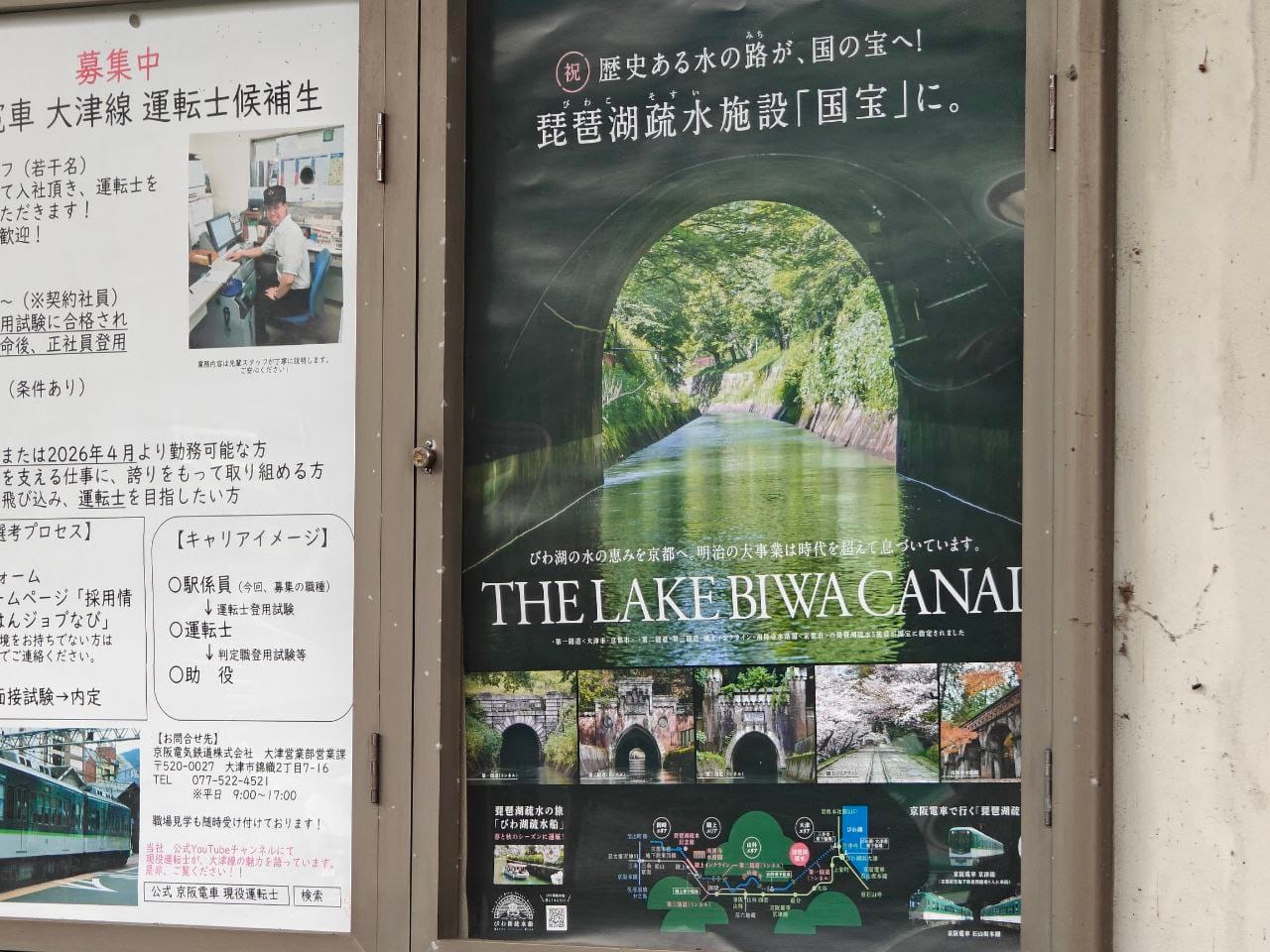
There are multiple stops along the canal route passing through Otsu, and the fall scenery along the way is something that should not be missed.
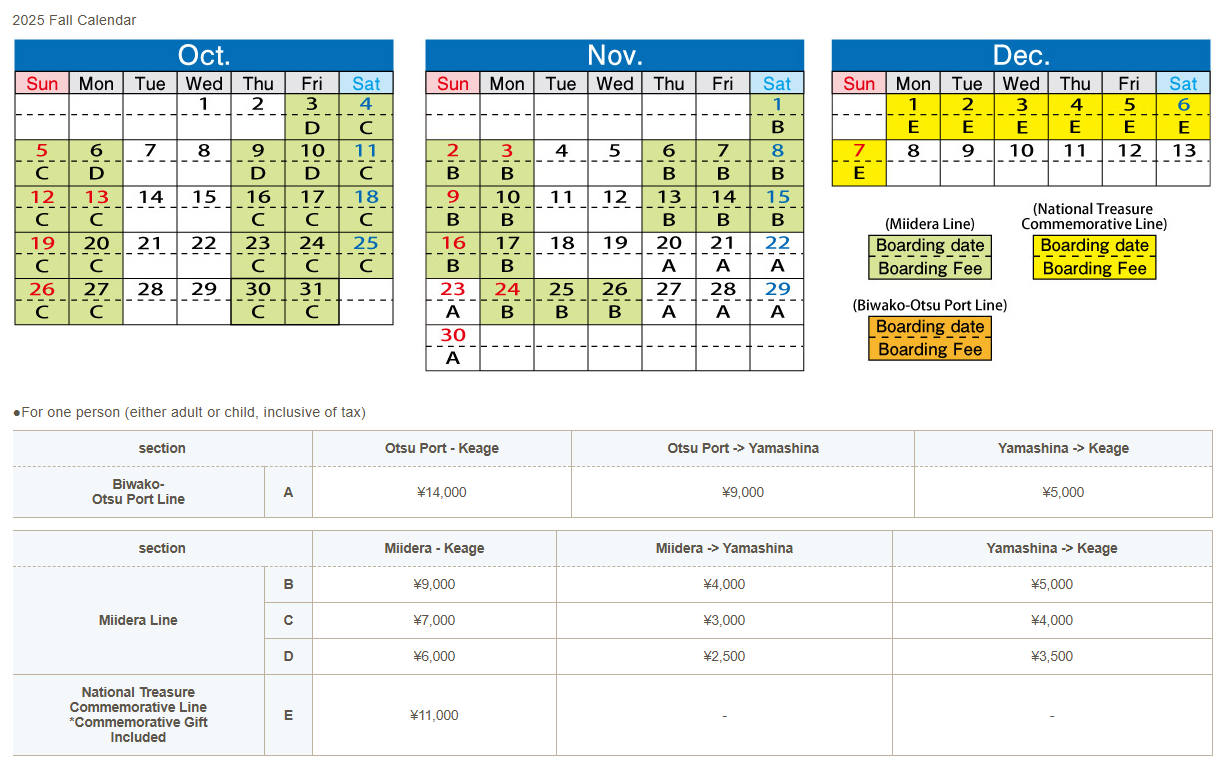

Accommodation: Inase Otsu Machiya Bed & Breakfast
Rating 8.6/10
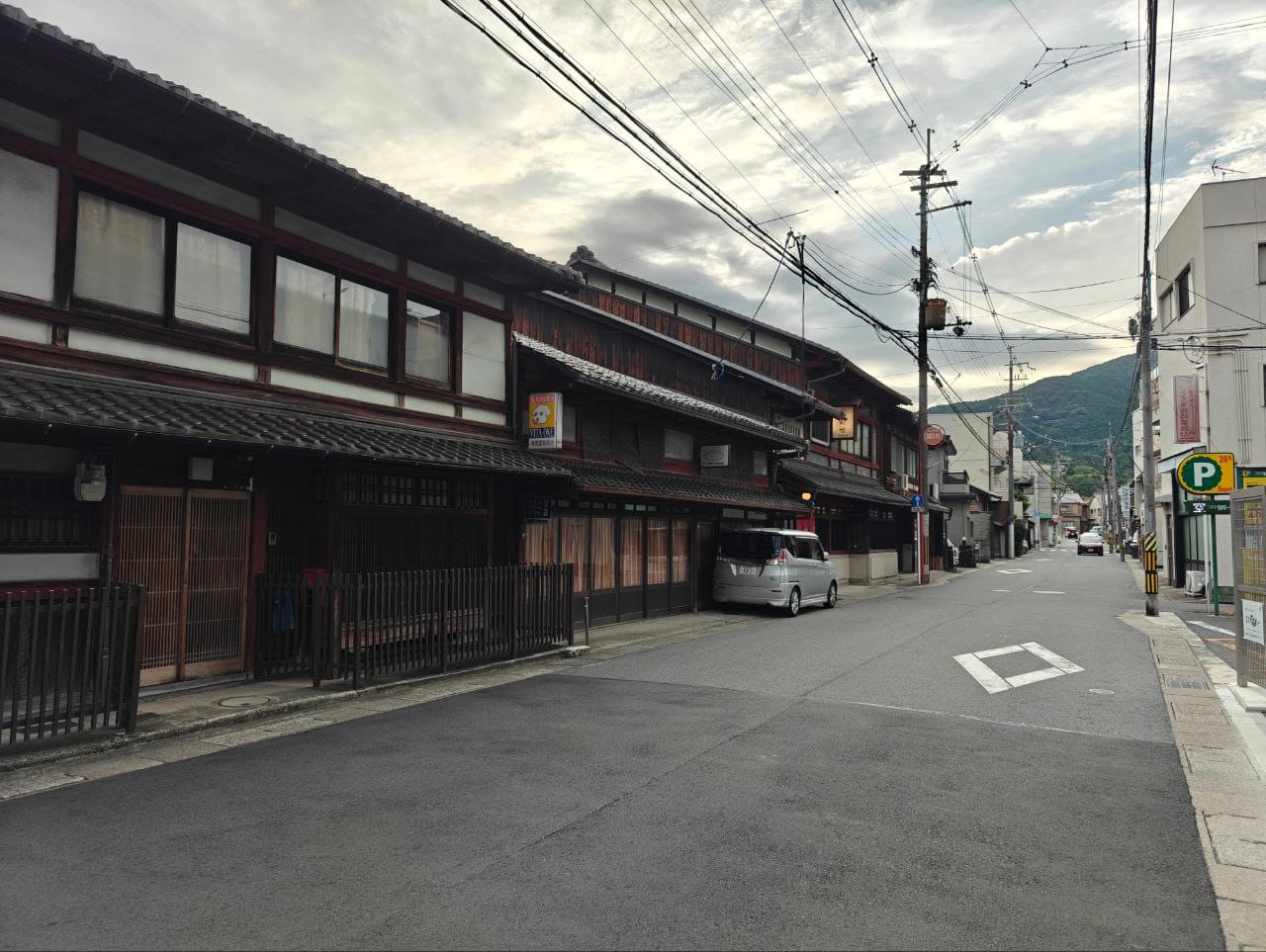
Inase Otsu is a machiya (traditional wooden townhouse) repurposed as a hotel 8 years ago, affording guests the opportunity to reside in quintessential Japanese traditional housing. Stepping through wooden sliding doors, we were greeted by the meticulously-upkept lobby and interiors reminiscent of another time in history. There are signages around the compound for visitors to learn more about the machiya. A very friendly staff assisted us with the check-in process.
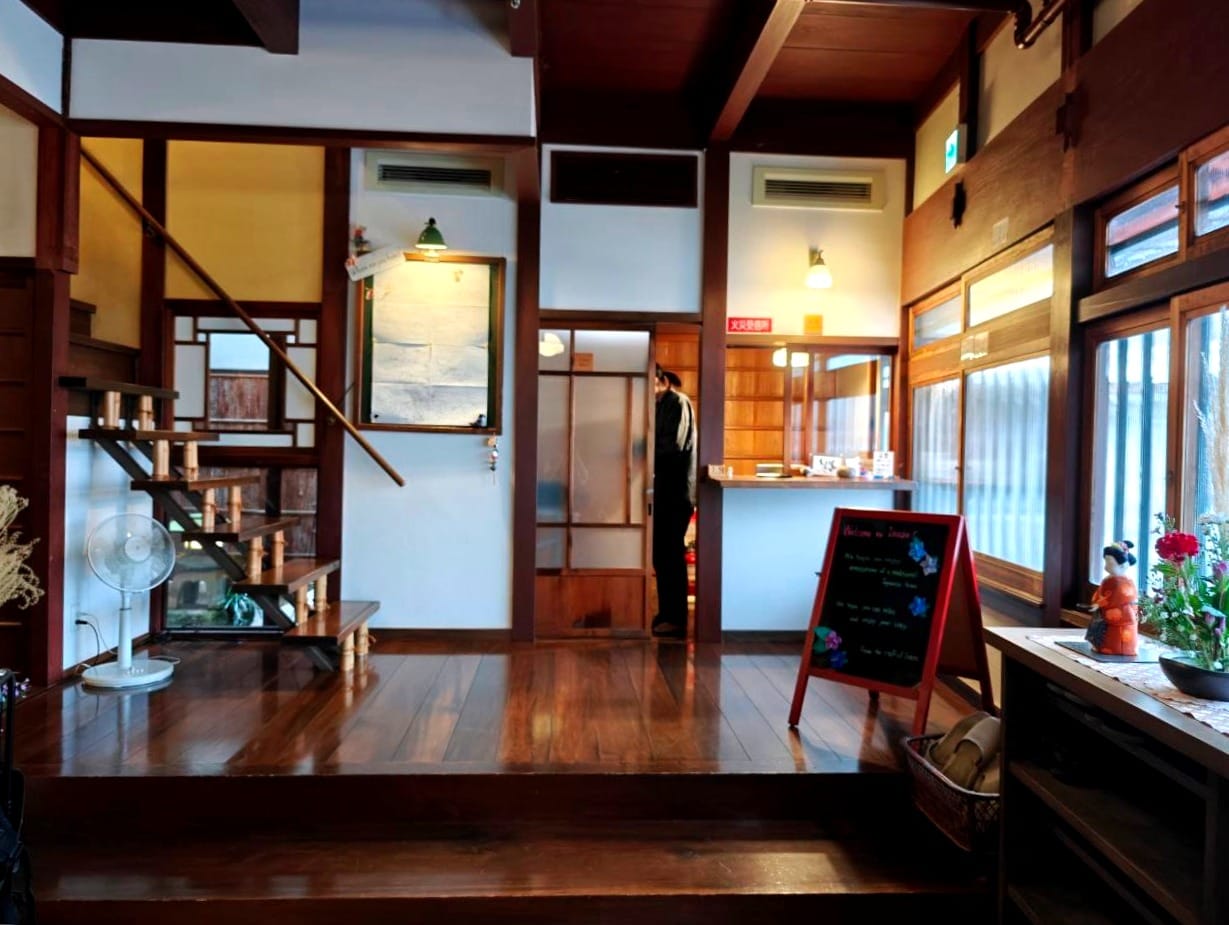
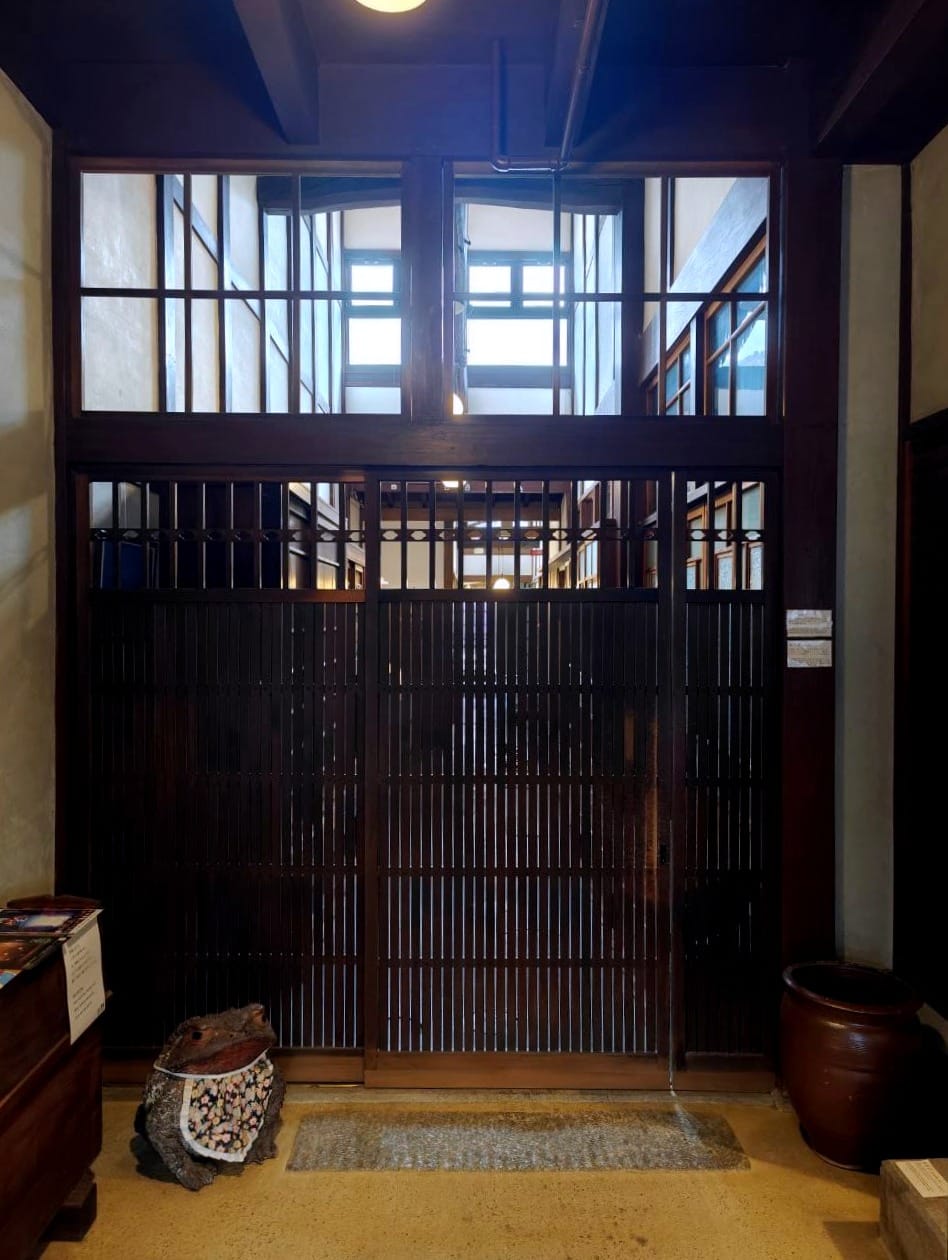
At Inase, there are options for traditional Japanese tatami or western bedding. Do note that the rooms with tatami do not come with a bathroom, and guests will use the public bathrooms within the facility.
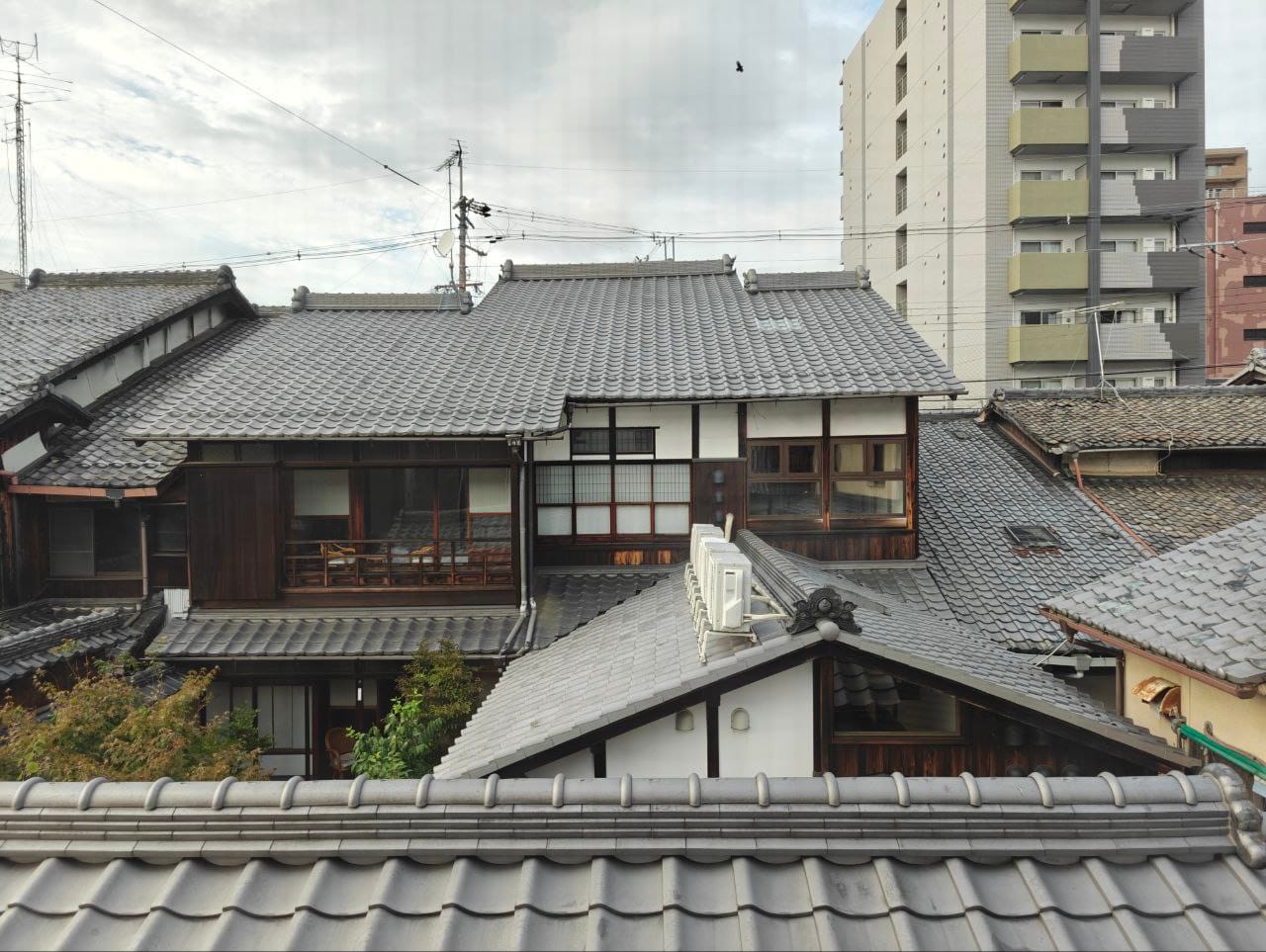
For our stay, we picked one with western bedding, situated towards the back of the machiya. The room was spacious, very clean and well-maintained, with a functional ensuite bathroom and a small kitchenette. Room rate was around 27,000 yen/night.
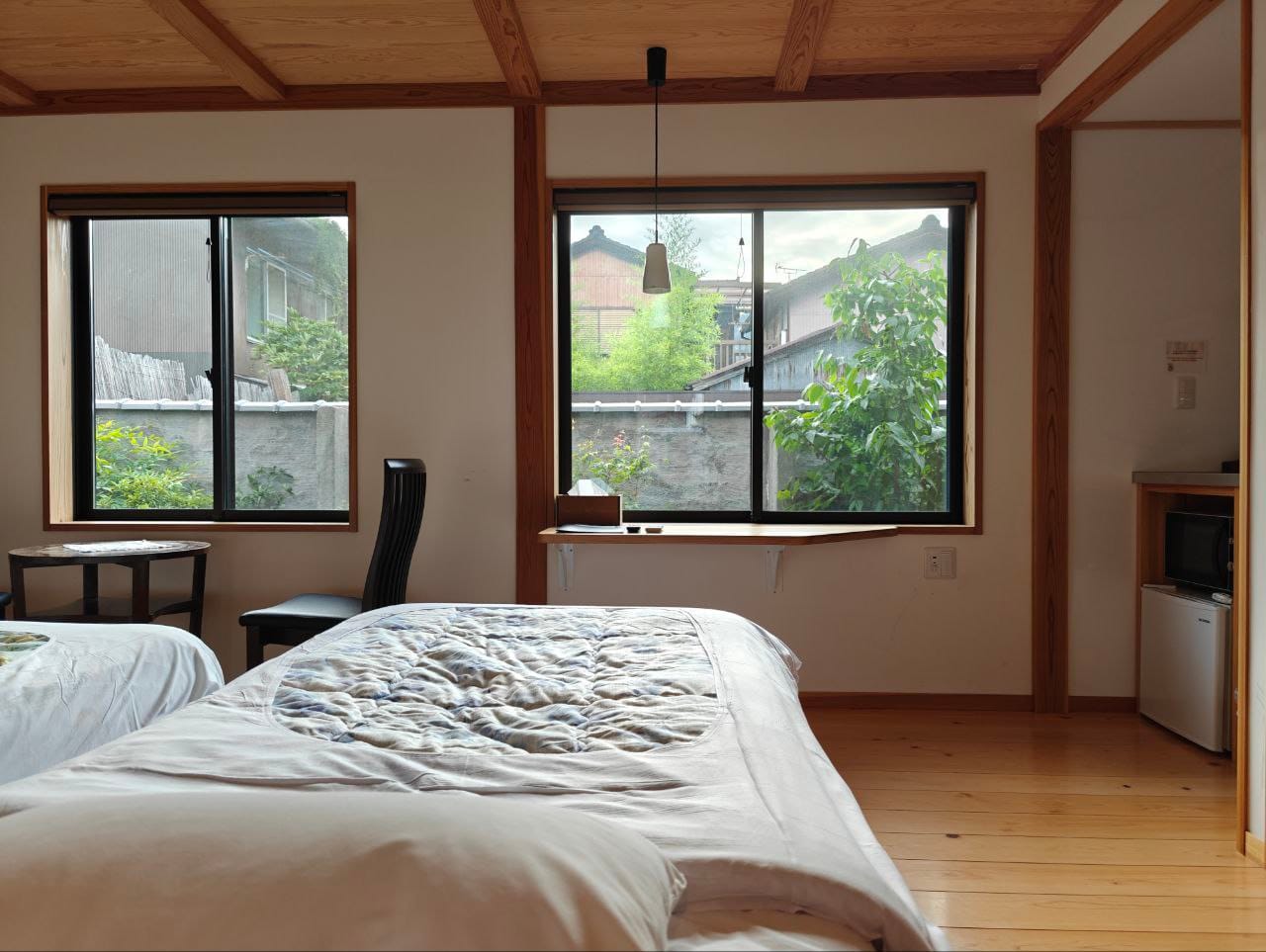
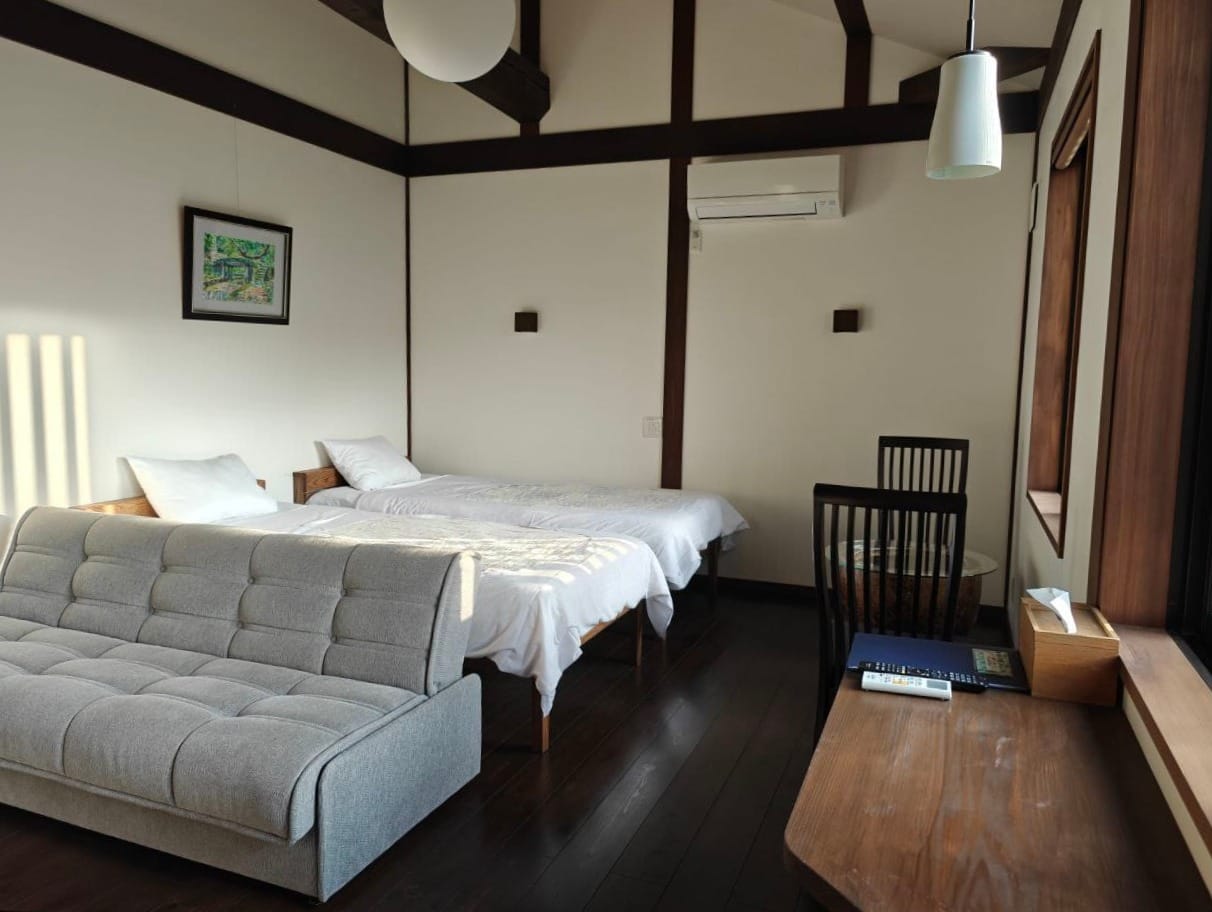

As a B&B, the stay came with traditional Kyoto breakfast – grilled salmon rice set, including pickled vegetables, egg roll and miso soup. Guests also had the choice of coffee or tea after the meal. Breakfast was served in the dining area and enjoyed while sitting down on the tatami floor.

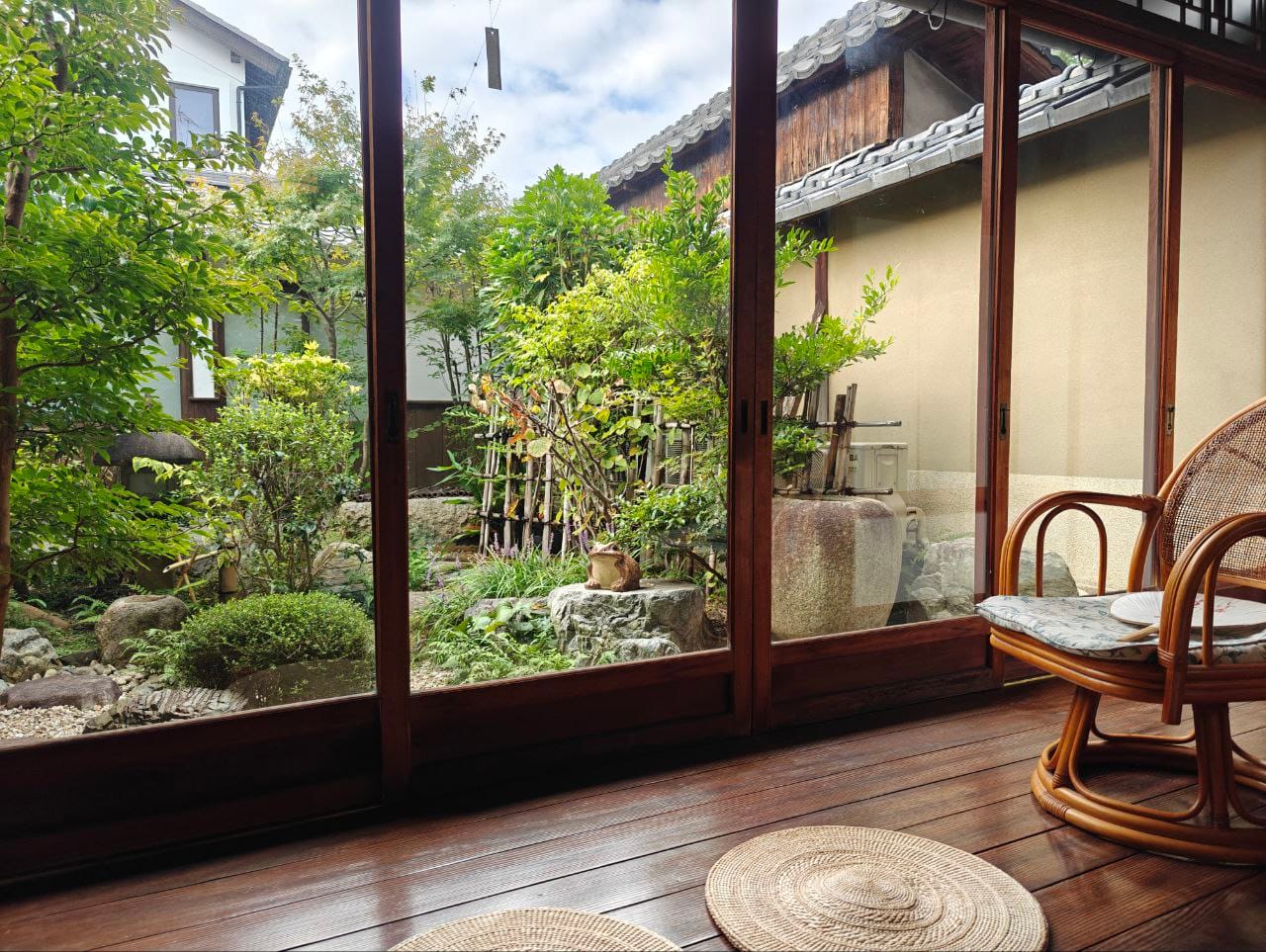
Do note that check-out time is earlier than usual at 10 am. Overall, we appreciated the traditional atmosphere and warm hospitality at Inase. The nearby Miidera Station is also a main station for the Lake Biwa Canal Cruise, making this accommodation a convenient choice.
Accommodation: DoubleTree by Hilton Kyoto Higashiyama
Rating 8.2/10
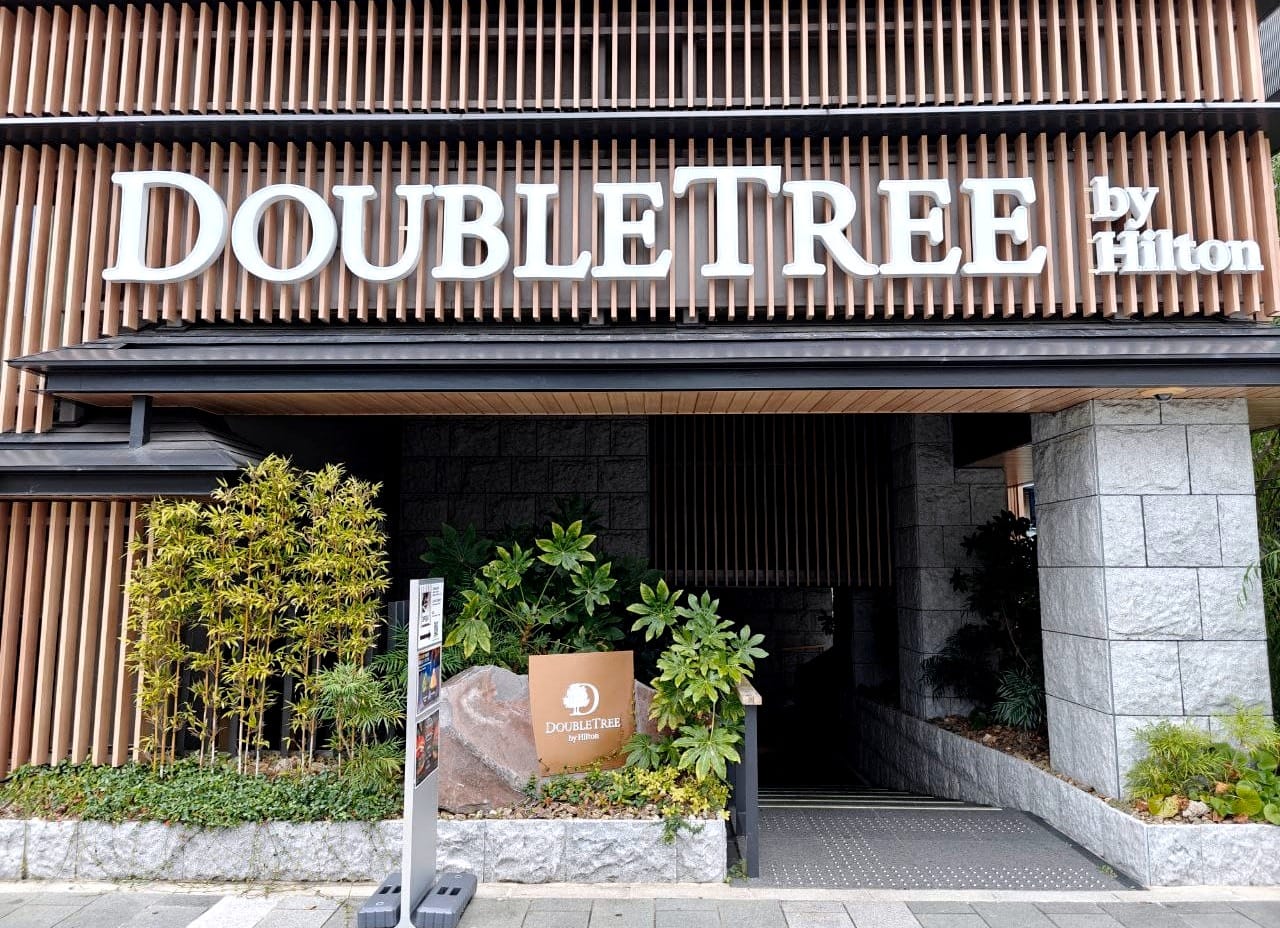
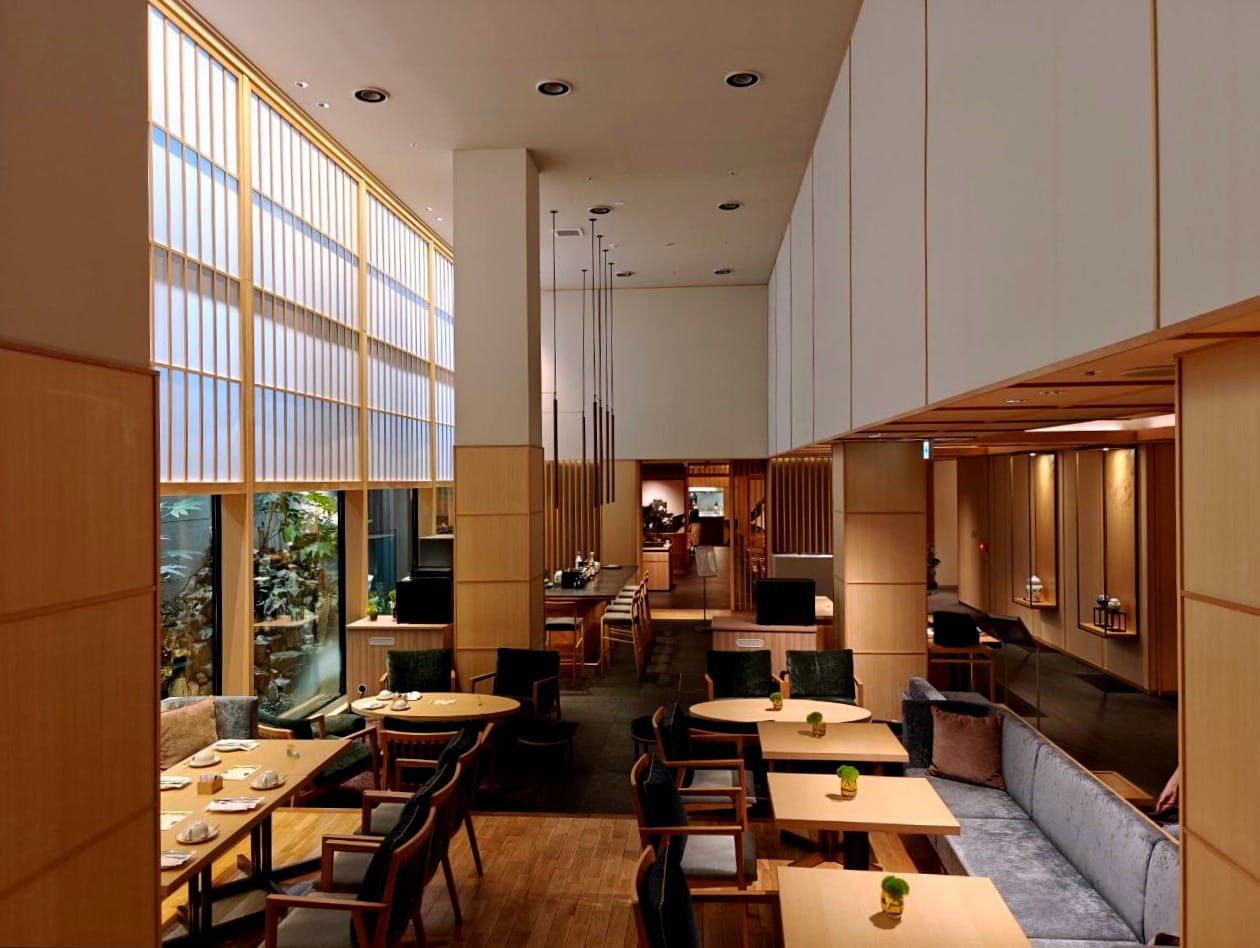
Situated a few minutes away from Kiyomizu-Gojō station is DoubleTree by Hilton, an international brand that celebrates Japanese culture via its interior design and amenities such as the on-site onsen. As we arrived on a Friday, the hotel was crowded at check-in time, and some time was spent waiting in line. During check-in, we were also given DoubleTree’s signature warm chocolate chip cookies.
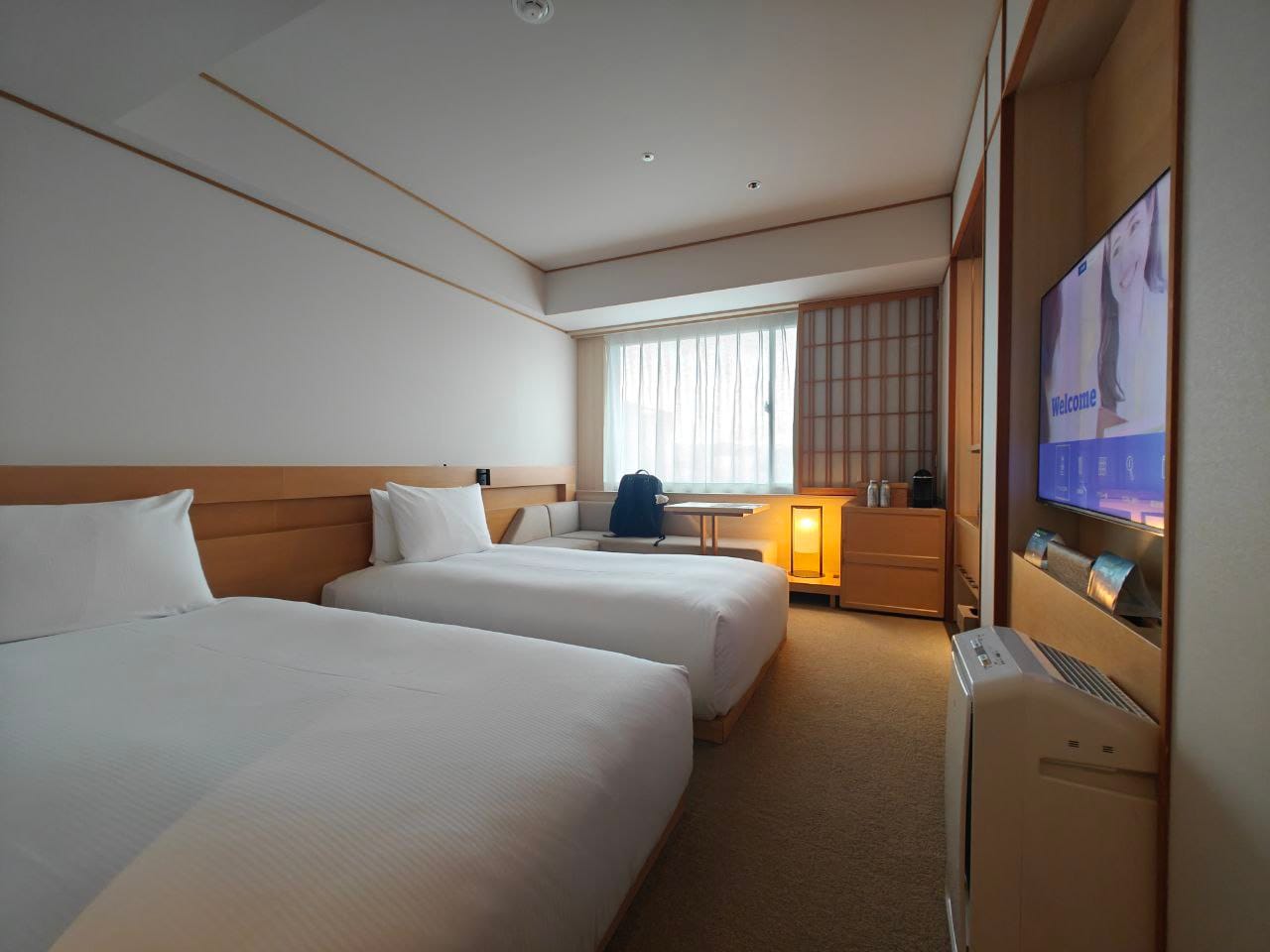
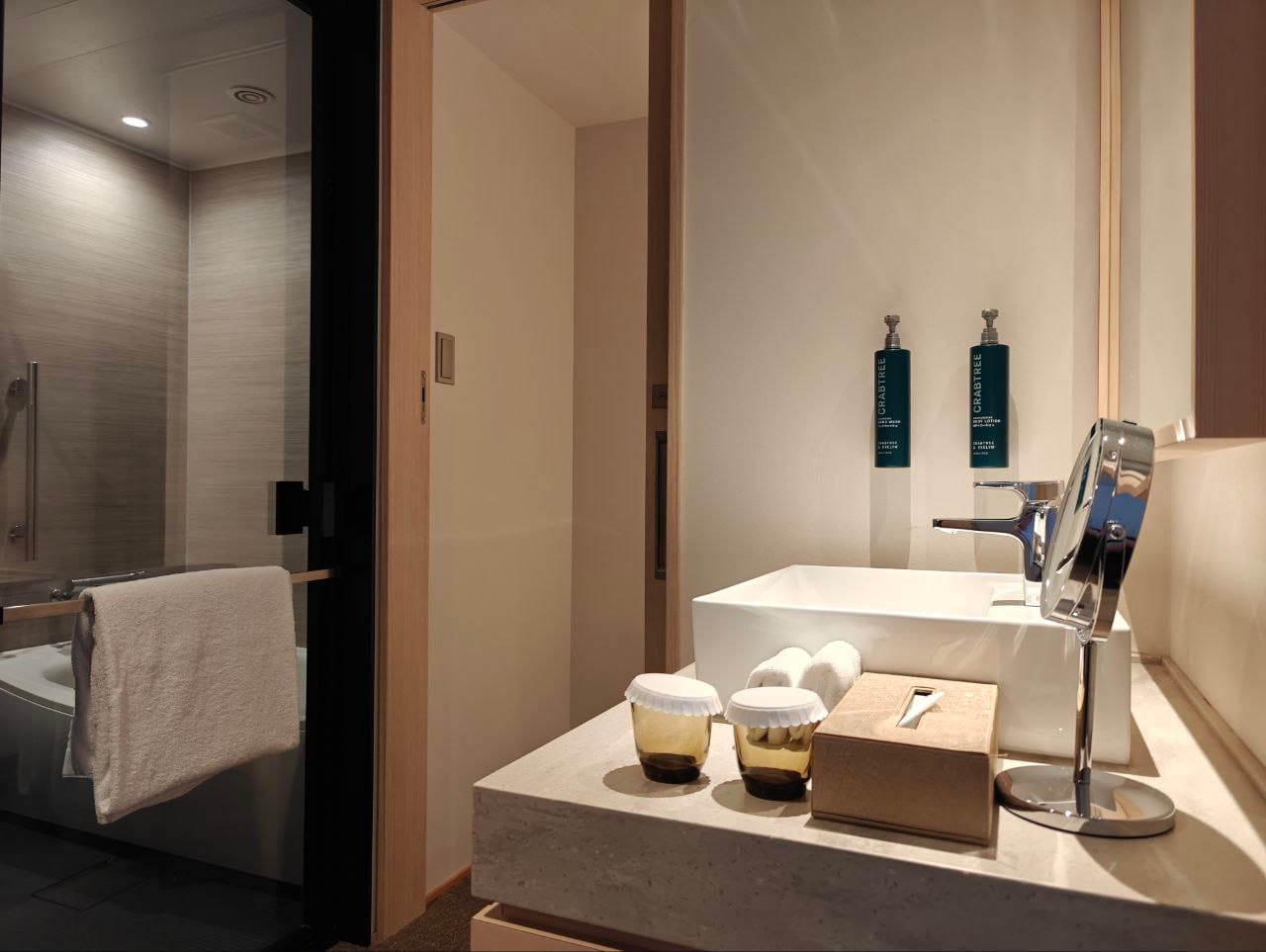
The Japanese-style room was cozy, clean and organized. We were on the 7th floor and the generous window afforded views of the city with glimpses of surrounding mountains. Room rate was around 30,000 yen/night.

Breakfast buffet was a curated selection of Japanese and Western classics, such as gyoza and miso soup, to bacon and eggs. There was also a tea corner with introduction to the types of leaves.
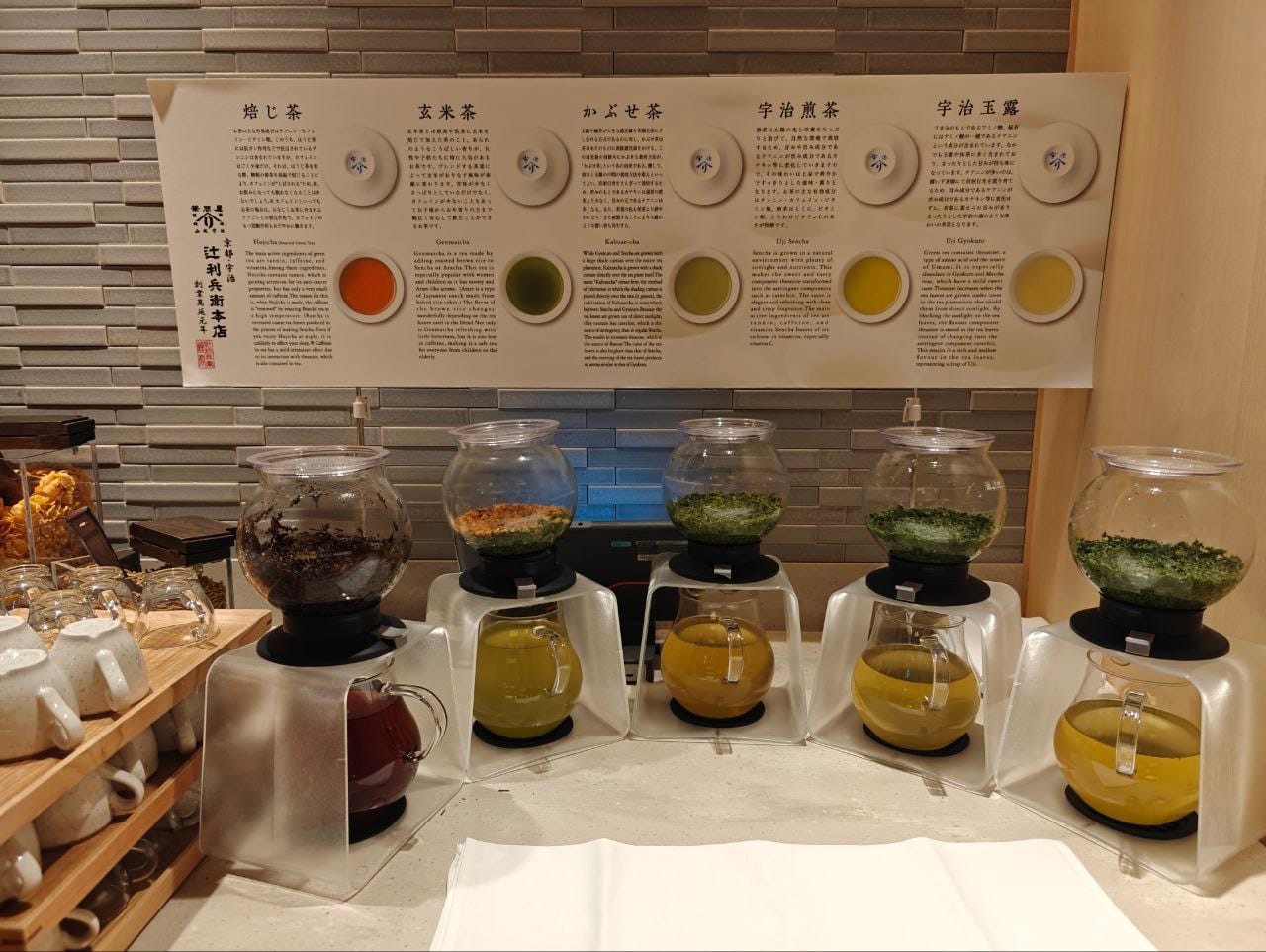
The gender-specific onsen that is located on the same floor as the lobby, can be accessed via a dedicated card available upon request from the frontdesk. There is also a fitness center on the first floor, although there are limited equipment given the small space in the room.
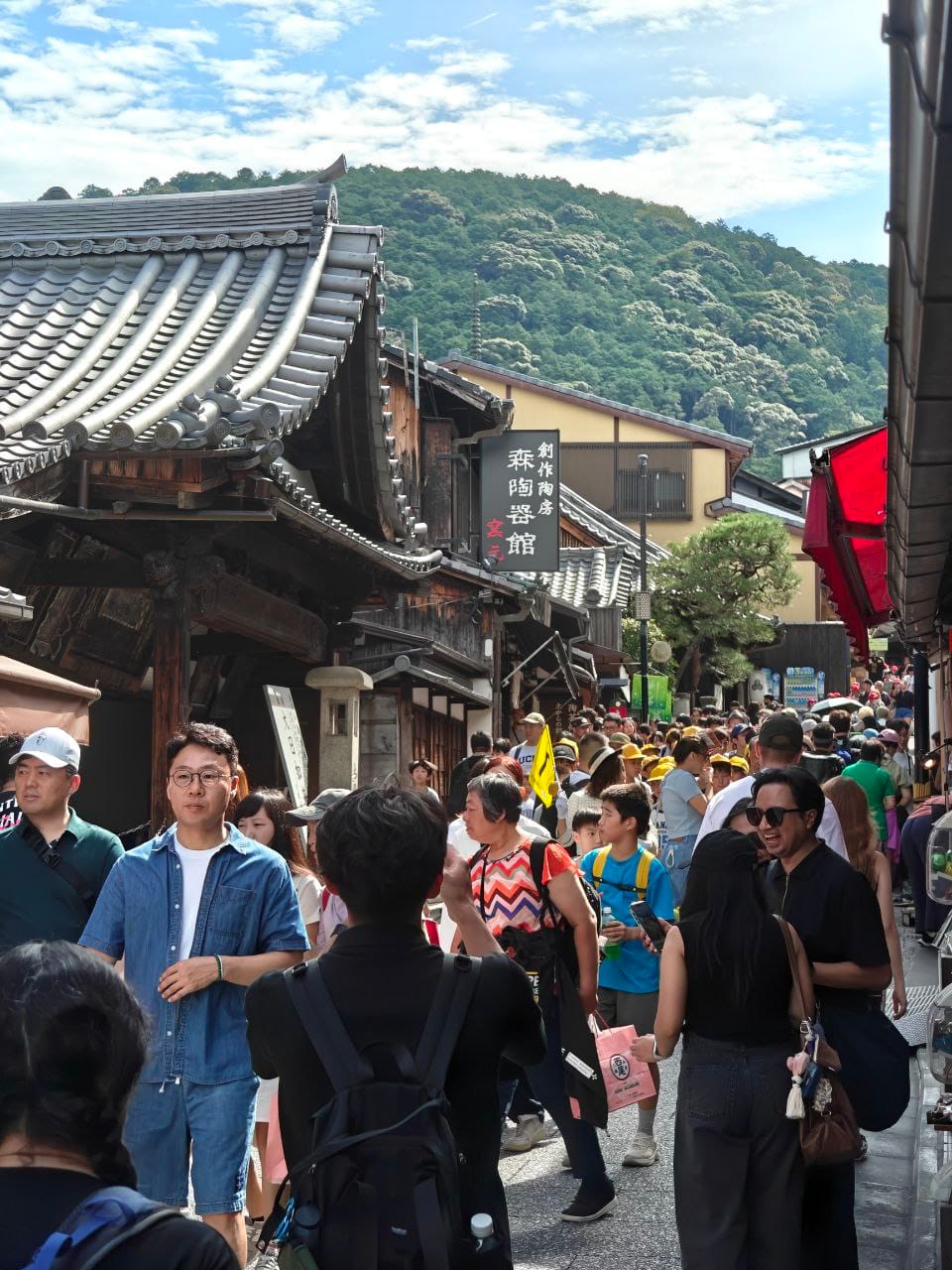
One of the main draws of the hotel is its proximity to the city’s renowned Kiyomizu-dera Temple, located a 20-minute walk away. Given its popularity as a sight-seeing destination, we were told it can start getting congested from the walk up to the temple. Staying close to the temple enabled us to arrive relatively early, which was a bonus.
Accommodation: Tune Stay Kyoto
Rating 7.9/10
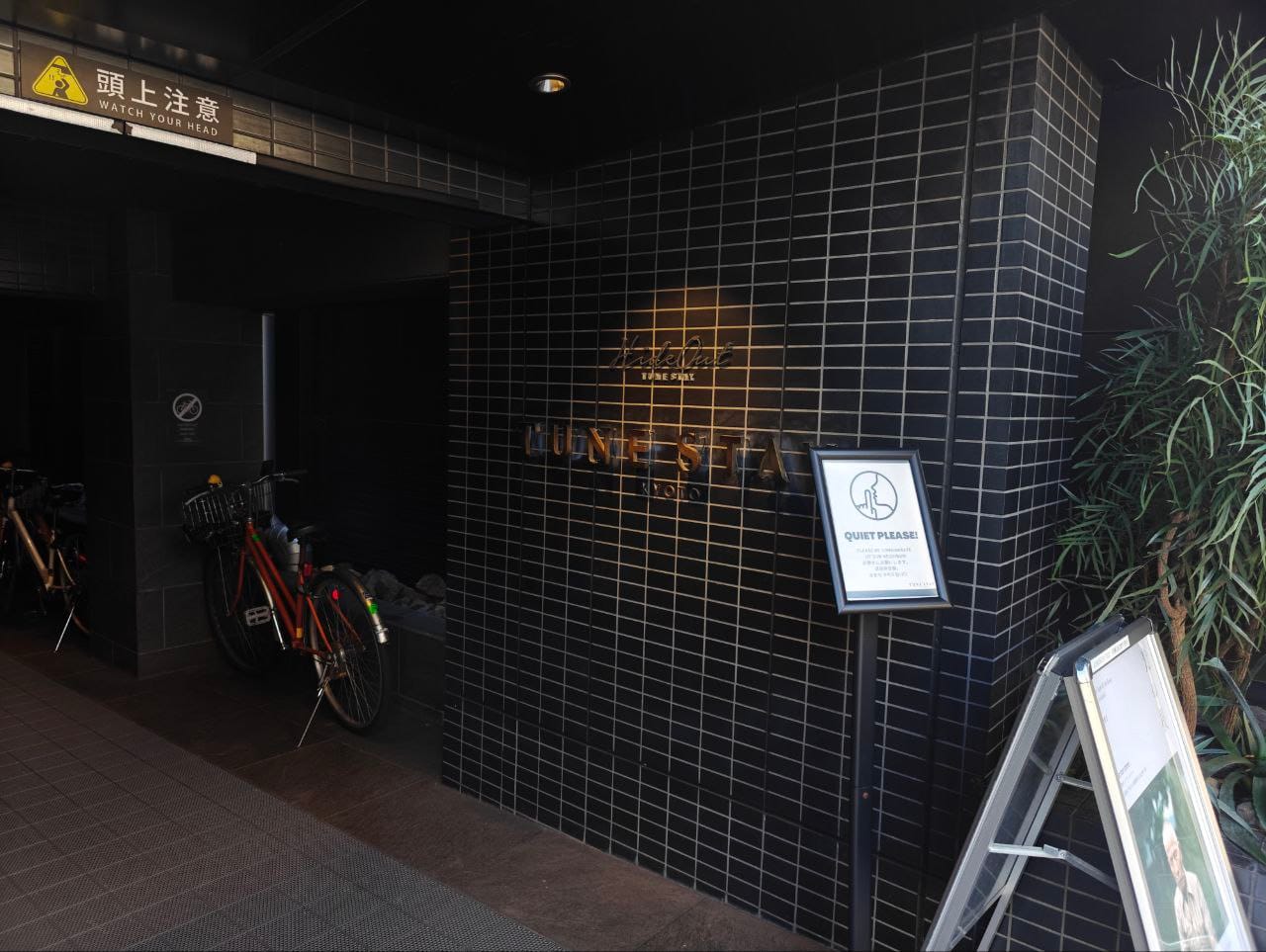
Tune Stay Kyoto was a convenient yet affordable accommodation that we checked into, as Kyoto Station was just a 10-minute walk away. This is a highly-rated hotel which is also popular among the younger travelers. For a more premium and spacious alternative, they have a sister property called Hideout Suite next to it.
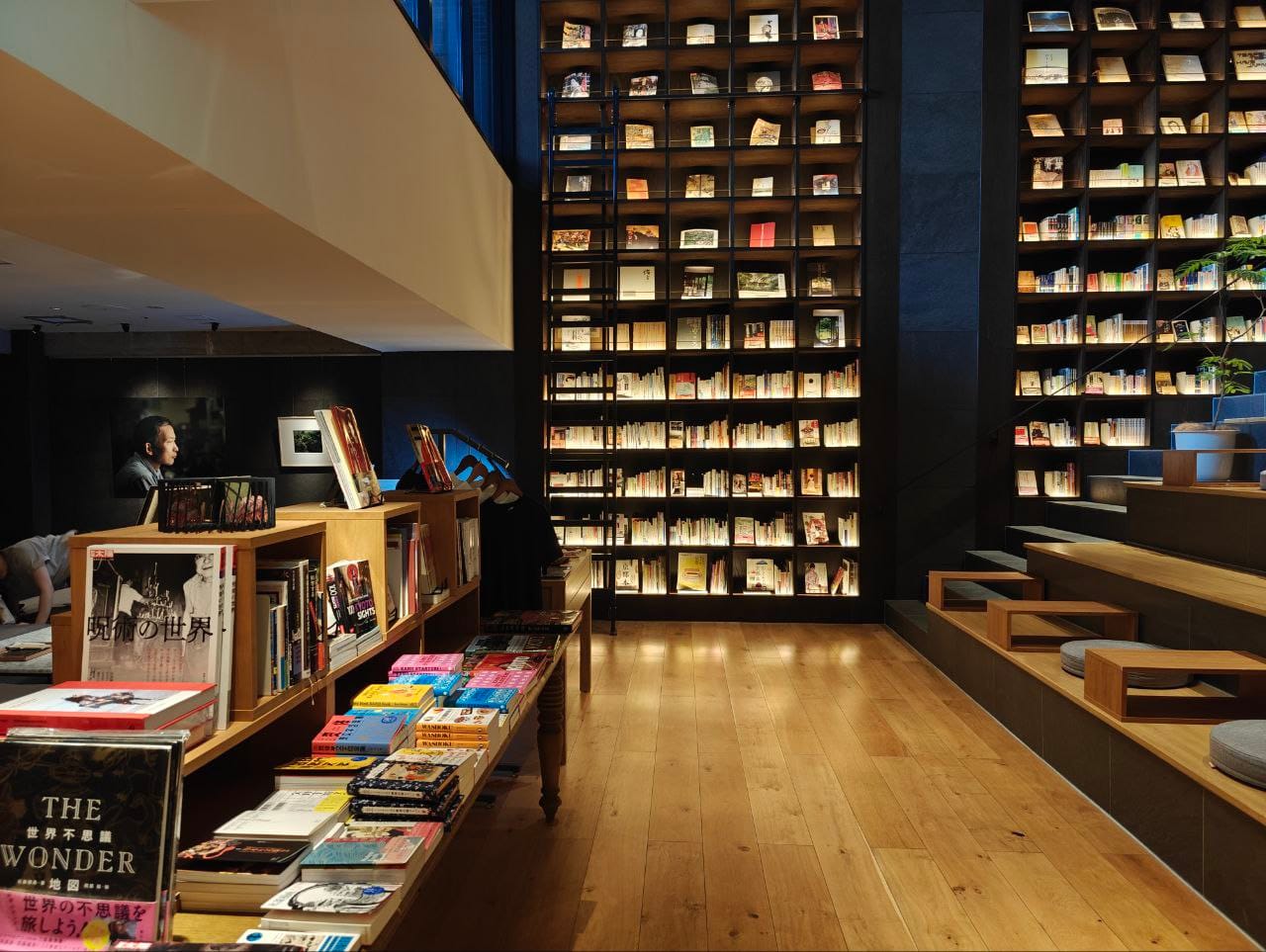
One side of the lobby had a massive 2-storey bookshelf leading to the basement, and a communal lounge area on the other side. We were promptly taken through the check-in process and shown to our room. The rooms at Tune Stay are no-frills, compact and organized, with a bunk bed and other well-designed furniture in place for maximum efficiency of space. Room rate was around 12,000 yen/night.
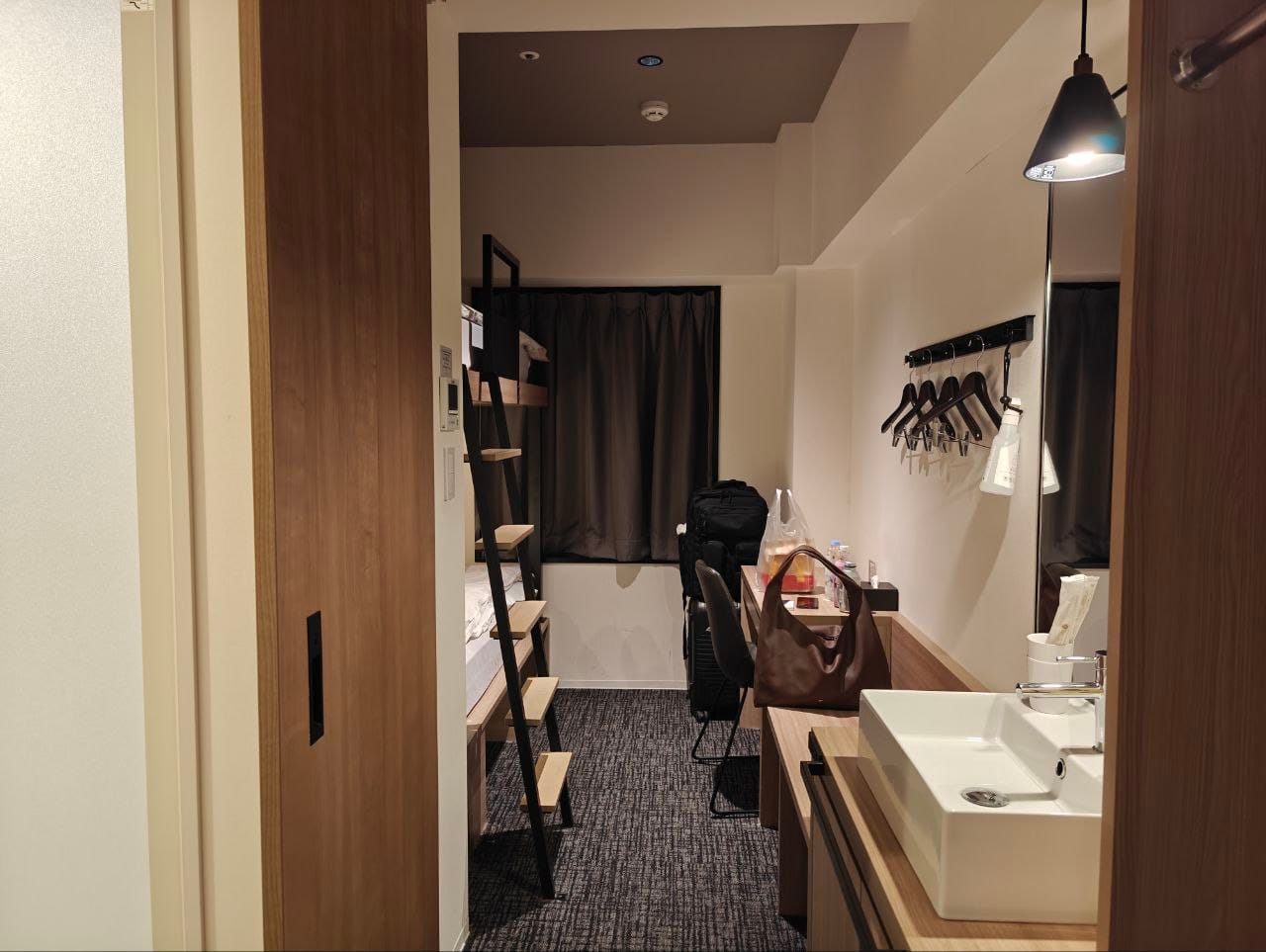

As for the hotel facilities, apart from the reading area at the basement, there is also a laundry room, communal kitchen and dining area.
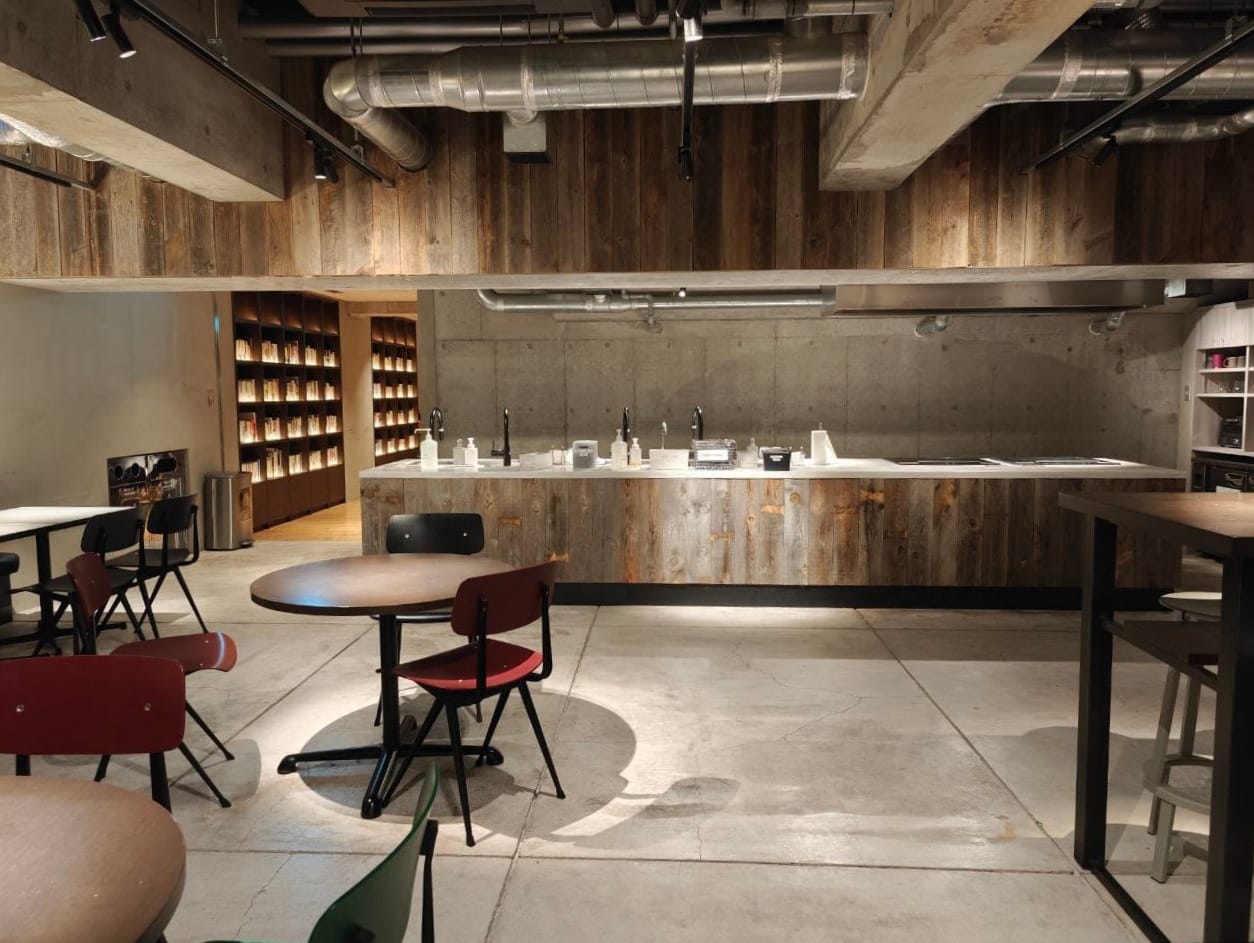
Dining: Junsei (Nanzen-ji Temple)
Rating 8.5/10

Situated near Buddhist temple Nanzen-ji, is Junsei, a traditional Japanese restaurant nestled within a garden. The kaiseki restaurant is designed such that guests will have to walk through a garden before arriving at the dining area.

The highlight at Junsei is its yudofu (tofu cooked in hotpot) and yuba (tofu skin made via the skimming the surface of boiling soy milk). Upon ordering the set meal that comes with side dishes, rice and soup, guests will have the choice to pick either yudofu or yuba to go with it. Each option is accompanied by dipping sauces and garnishes to be consumed in a precise way.
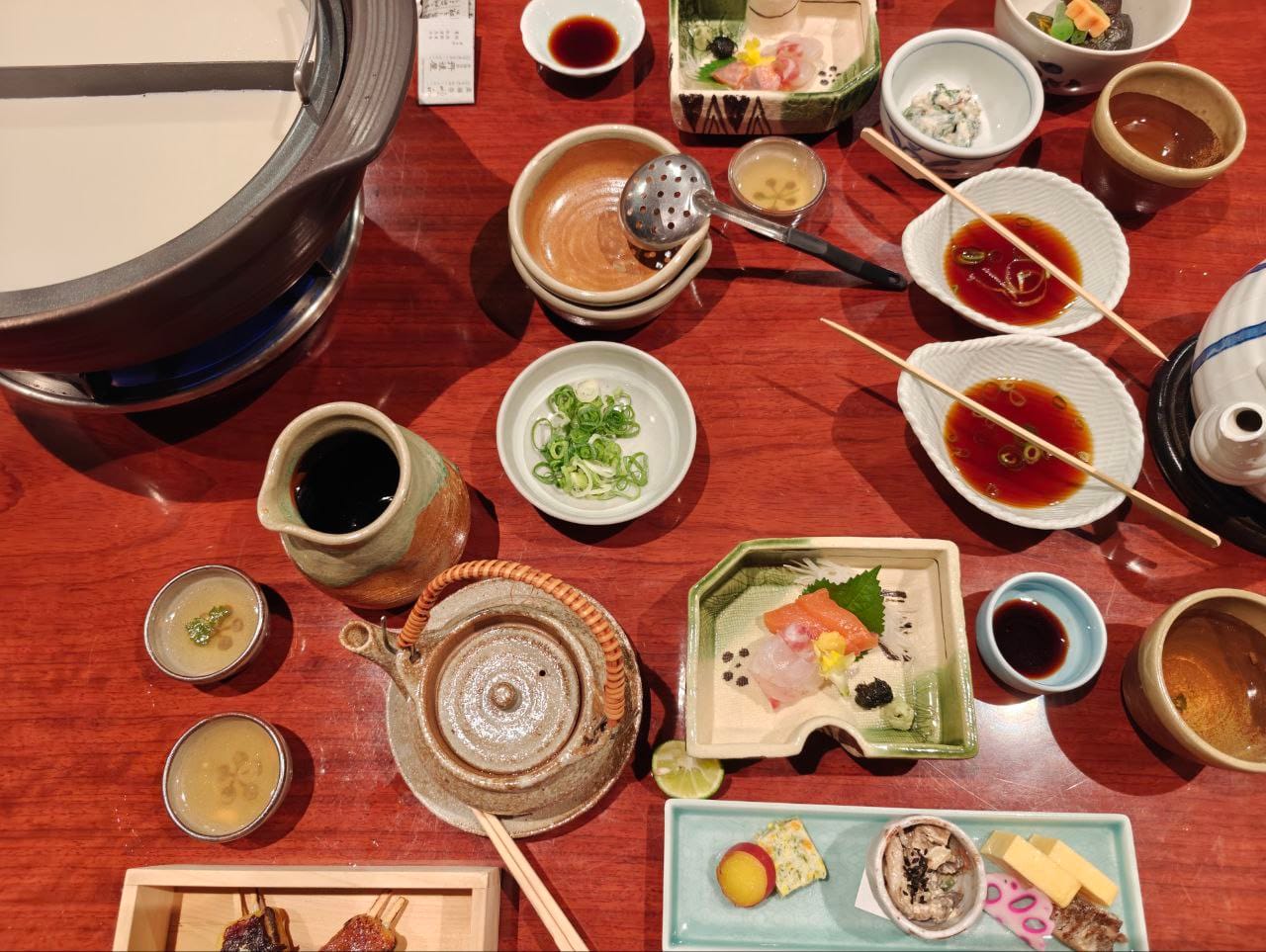
The yuba was also to be skimmed personally by guests, adding some activity to the meal. We were fortunate to be served by very friendly staff who patiently explained via gestures despite not speaking much English.
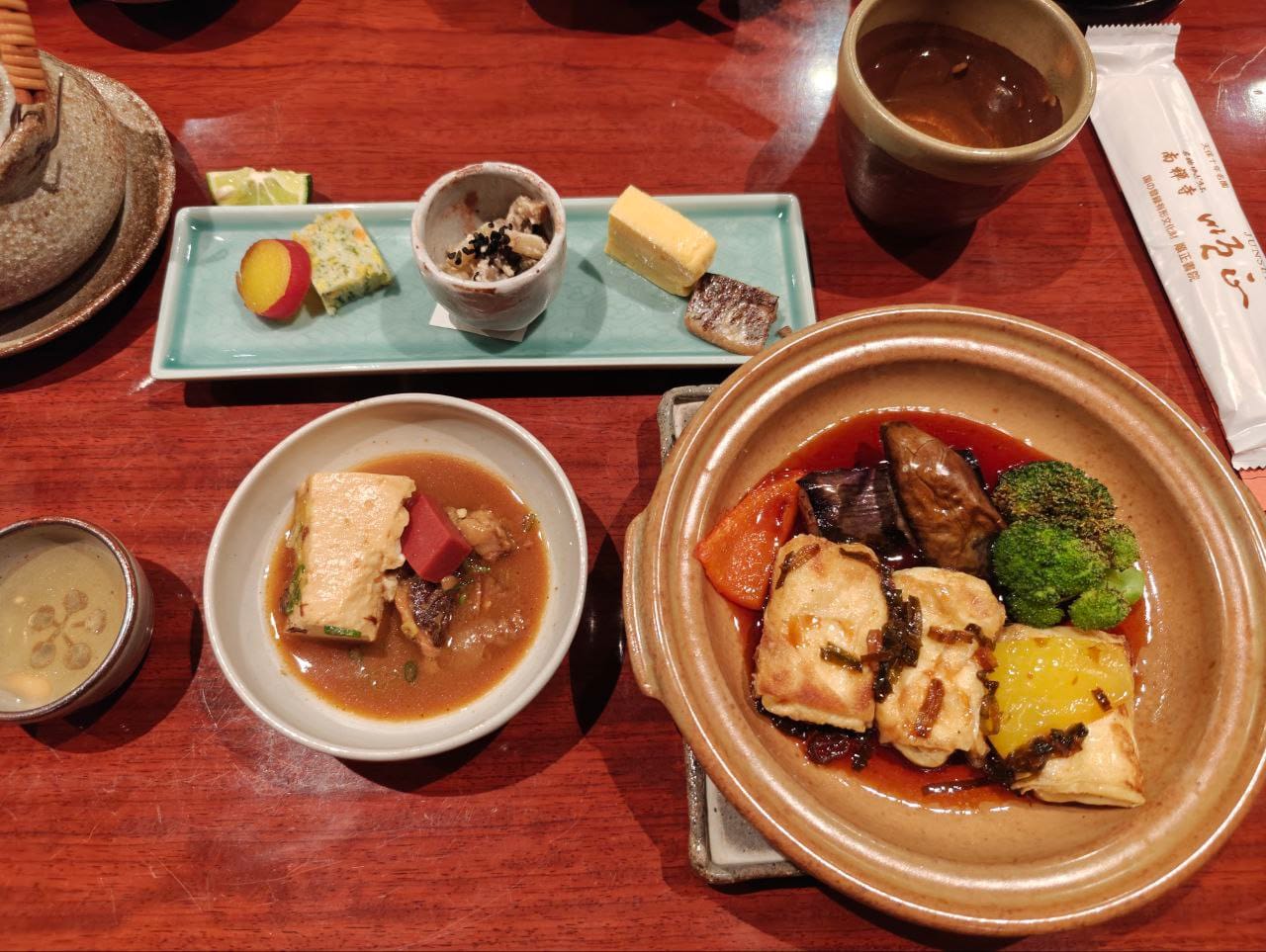
Overall, the food at Junsei was light on the palate, bringing out the authentic flavours of the good quality ingredients used. Given its multi-course menu and traditional garden setting, the meal felt nicely elaborate.
Dining: Ponshu-ya Santoku Rokumi - Gojo Takakura
Rating: 8.2/10
Kyoto, with its vibrant izakaya scene, has plenty of options to choose from. During our visit, we went to Ponshu-ya, which was one mainly serving oden, an interesting twist to the more common yakitori.
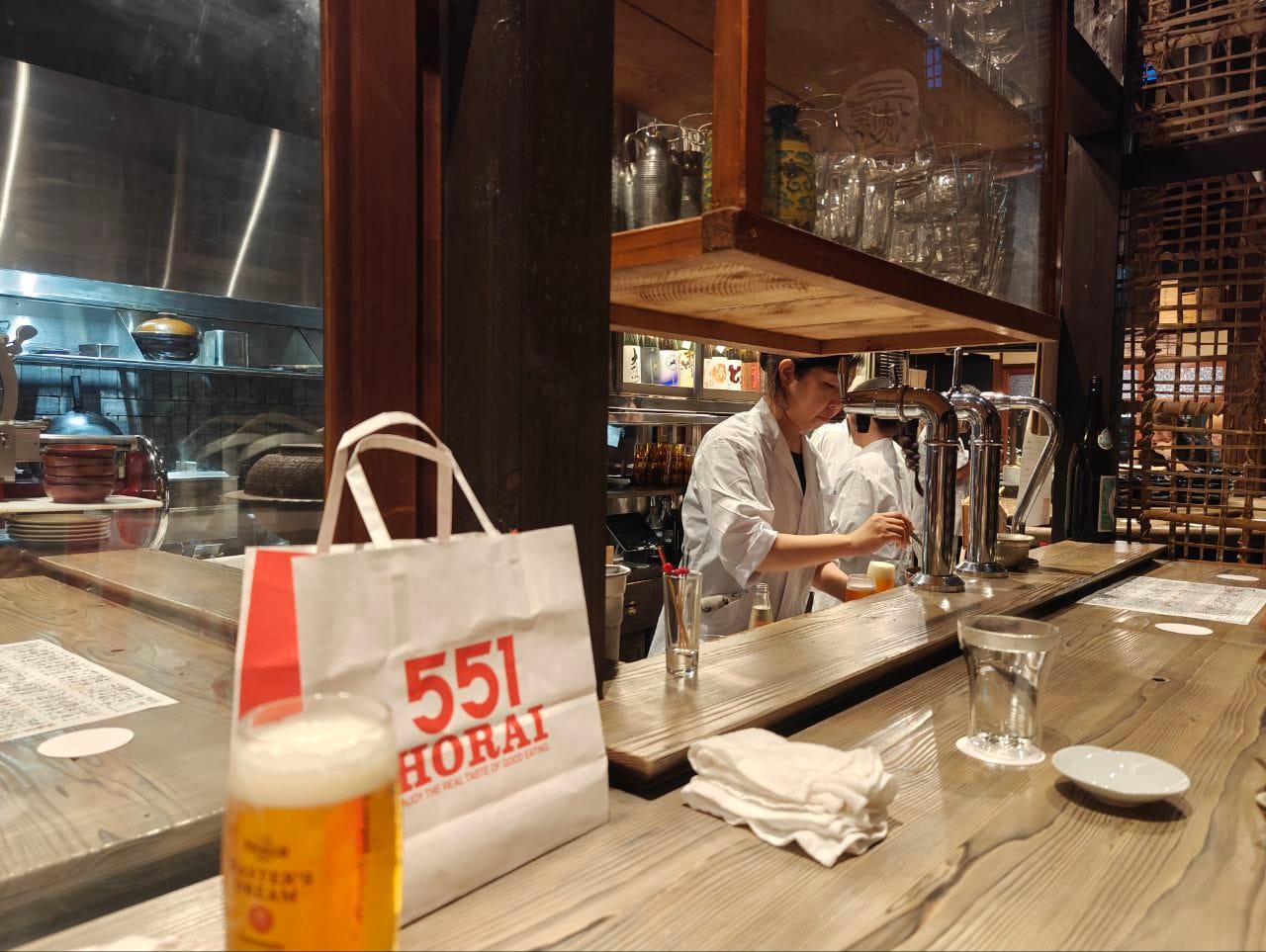
Ponshu-ya is a cozy restaurant with limited bar seating. Upon sitting down, we were shown an English menu which stated that it was an excerpt of the full menu, based on popular orders. Despite it being an excerpt, we found it rather comprehensive and managed to order sufficiently. Do note there is a one beverage order per person policy, applicable to the entire drinks menu, not just alcoholic selections.

On top of oden, there are also other dishes such as grilled beef and chawanmushi. As night fell, the restaurant promptly filled up. Hence, do come early to avoid a wasted trip.
Dining: Kyoto WAGYU tonkatsu ten no meshi gionshirakawa
Rating 7.8/10
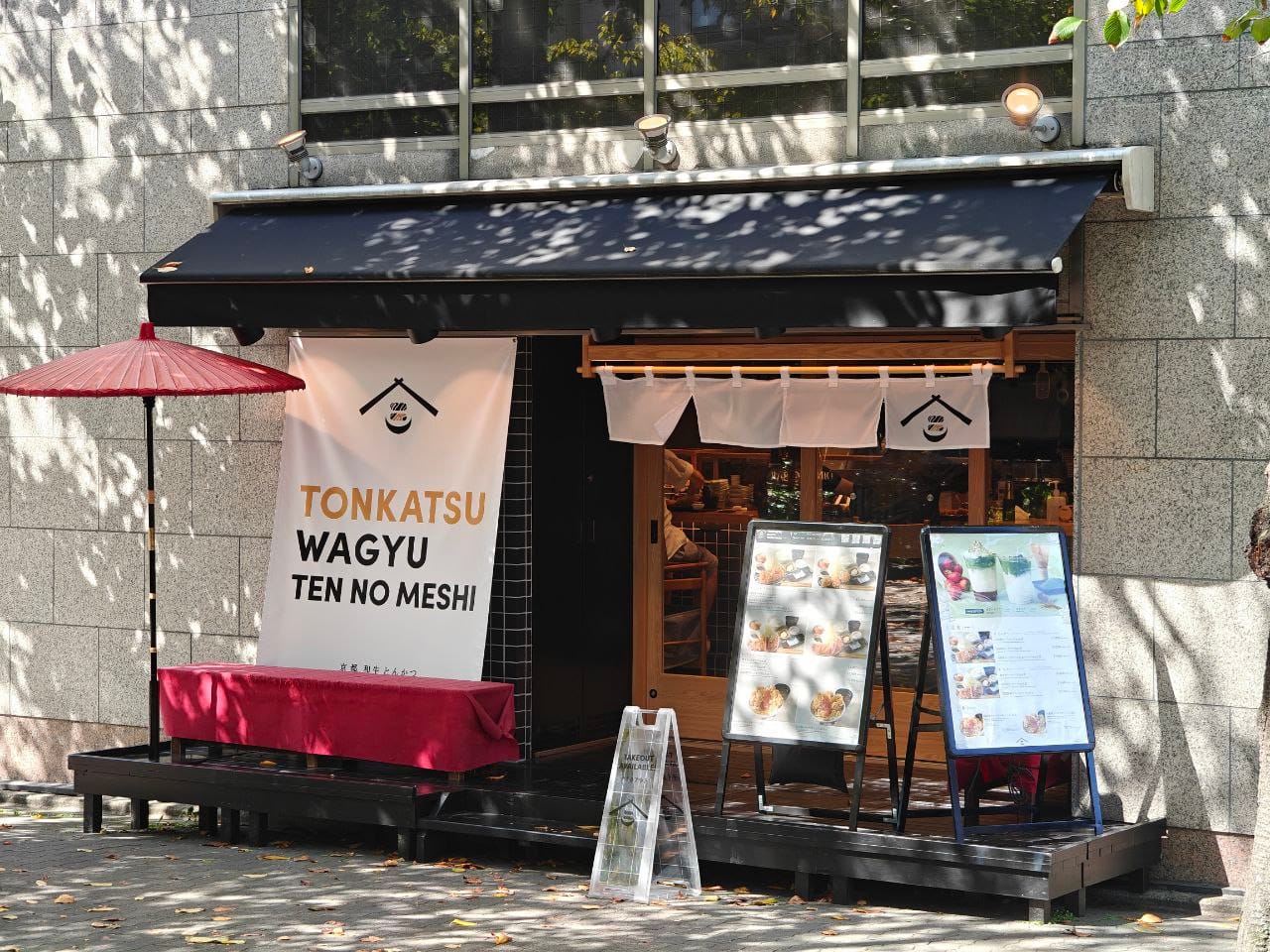
Ten no meshi is a popular tonkatsu restaurant in the Gion district, just a minute walk away from Gion-Shijo station. It has a small seating capacity of about 20 pax. Known for its “performances” while serving their dishes, the place is popular amongst tourists. Selected service staff could speak fluent English, smoothening the entire dining experience.
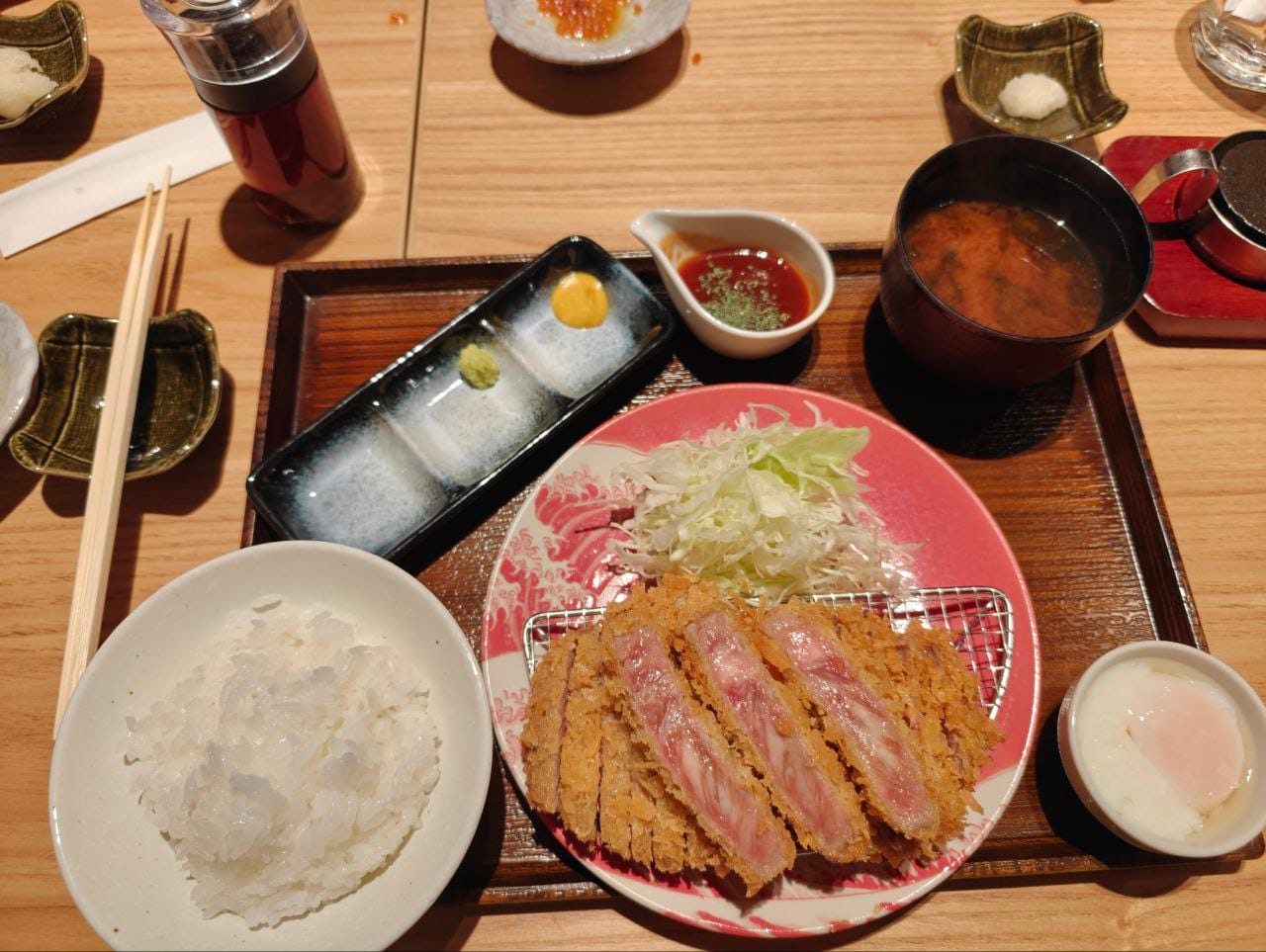
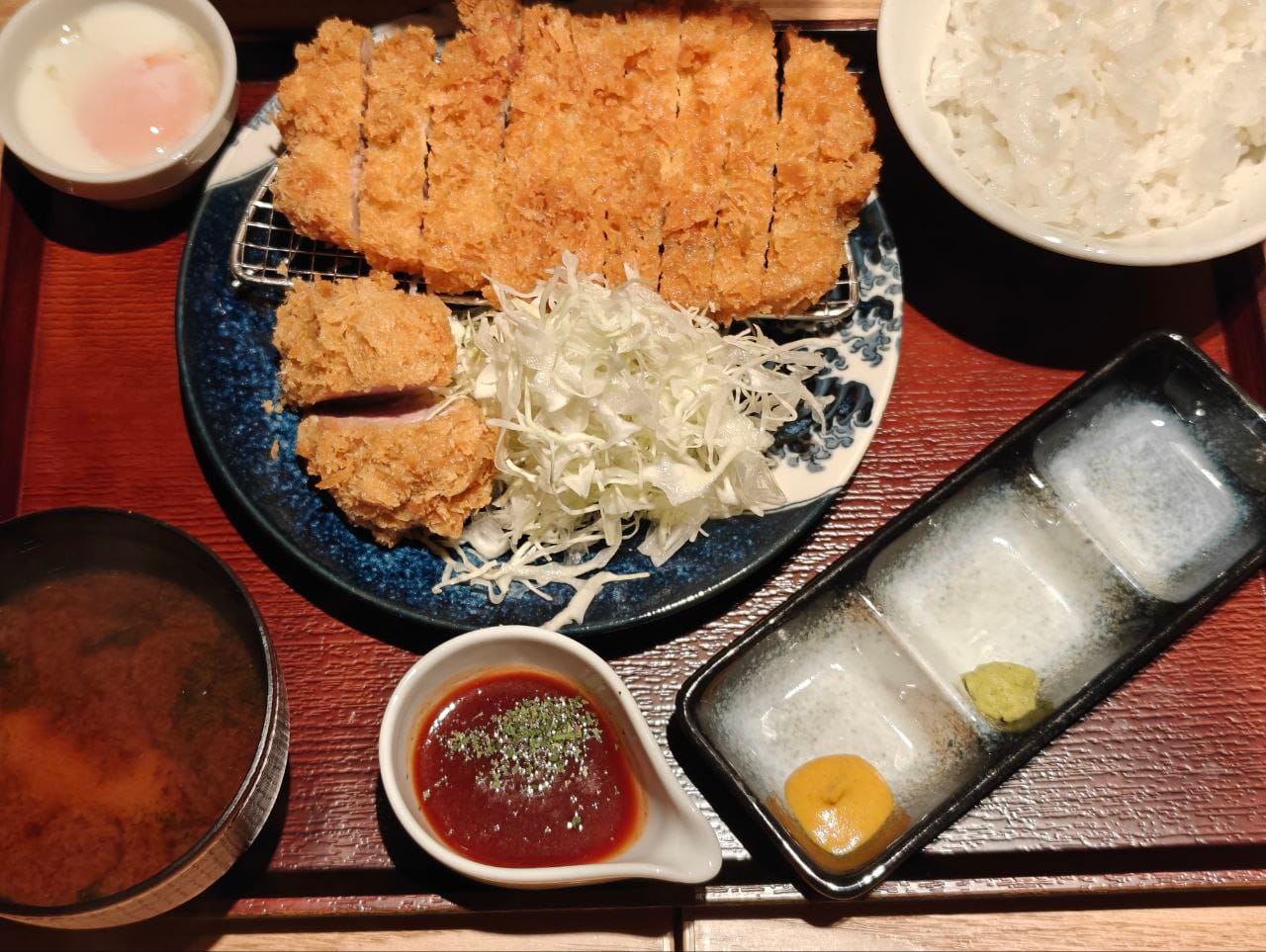
We ordered a pork loin (tonkatsu set) and beef loin (gyukatsu set). Presentation of selected dishes was completed with a performance of a short rhyme while adding salmon roe as a final touch. The gyukatsu set came with a hot stone to allow guests to further cook the beef as they desired. The tonkatsu was fried well without feeling too greasy, although we wished we had ordered the beef fillet which was a leaner cut to complement it better.

The restaurant is adjacent to Kamo River and right beside Shirakawa canal, providing for an excellent post-meal stroll. The scenic walk along the canal is lined with traditional Japanese houses and well-kept fauna on both sides. Crossing the canal via tatsumi bridge will take you to the bustling Gion-Shijo at the end of the street.
Dining: Kagizen Yoshifusa Shijo Main Branch
Rating 8.0/10

Kagizen Yoshifusa is a long-standing traditional Japanese confectionary shop in the popular Gion district. The facade of the store expresses rich history with wooden-panelled windows and noren hung at its doorway.
Visitors can purchased ready-made sweets in the front of the store or choose to dine-in at a spacious sitting area towards the back. Dine-in menu is limited to a few specialties and when we visited at 2 PM, some items were already sold out. Do note that there is a policy of one order per person.

Japanese tea and sugar biscuits were complimentary. We had their signature Kuzukiri, warabi mochi and iced matcha. Kuzukiri, silky arrowroot noodles with brown sugar syrup as dipping sauce, was a standout for us with its unique way of eating and balanced sweetness. It was also served cold, making it very refreshing in the afternoon heat.
Activity: Kiyomizu-dera Temple
Rating 8.2/10

Kiyomizu-dera Temple, a Buddhist temple with over 1200 years of history, is one of the most iconic sightseeing spots in Kyoto. The temple is a 25-minute walk from Kiyomizu-Gojō station. As it is halfway up Mt. Otowa, do note that it will be a slightly uphill walk.
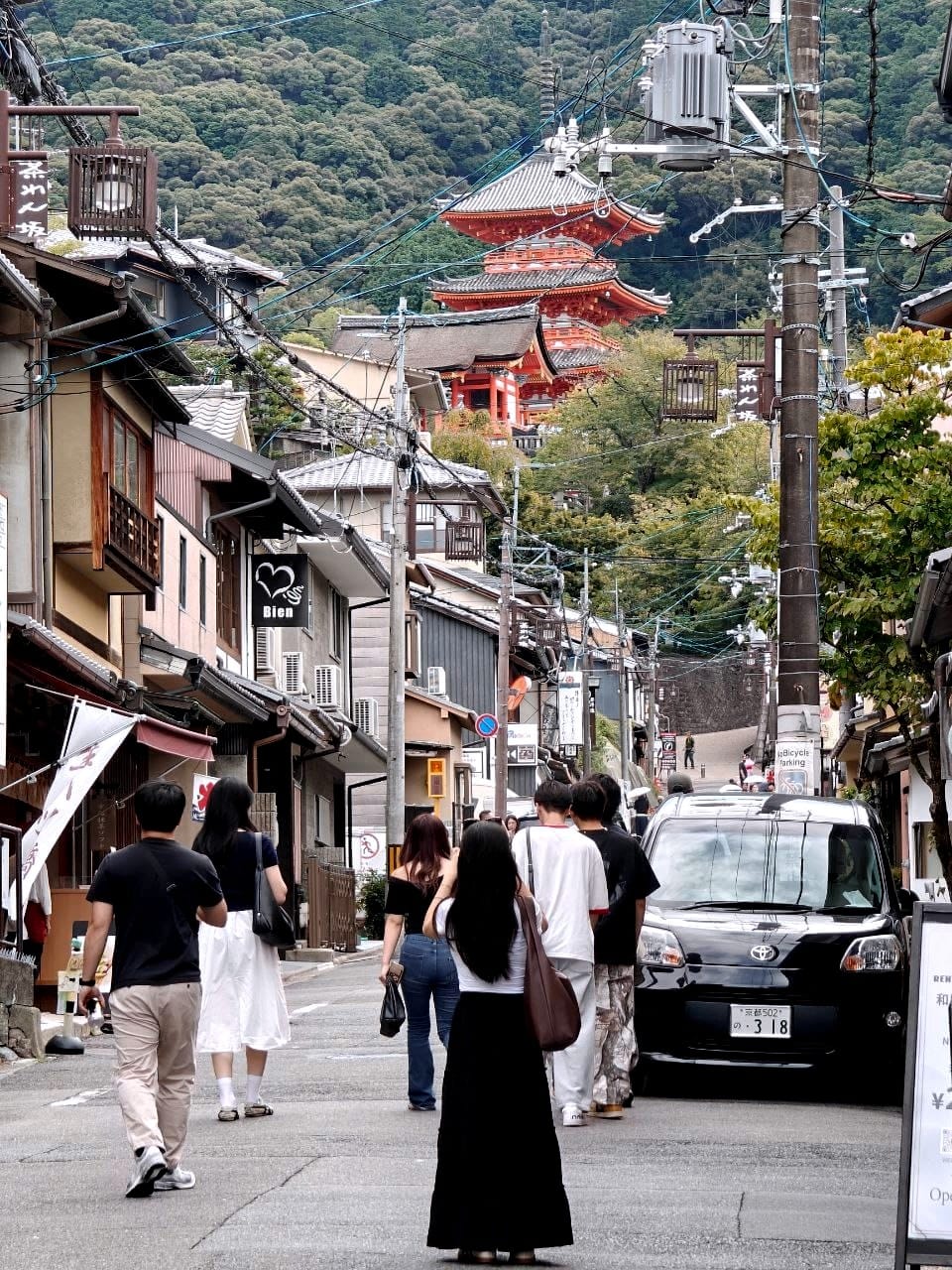
The streets leading to the temple are lined with shops selling snacks and souvenirs, making the walk up an attraction of its own. Tickets to the temple can be purchased at the ticket booths situated at the entrance.

With multiple halls within, the temple grounds can take about an hour to explore. Visitors are allowed to pay respects at selected halls. There are also rituals and events that visitors can observe depending on the time of the year. Information regarding these special events is available on their official website.

In addition to the grand architecture of the temple halls, being atop a mountain meant that visitors were also treated to a panoramic view of the city while being surrounded by lush nature. As we arrived relatively early at 8:30 AM, we could enjoy the views with relatively less crowd. We noticed visitors started to fill the grounds and the street leading to it as we were departing. Consider arriving early for a more comfortable visit.
Activity: Nishiki Market
Rating 7.8/10
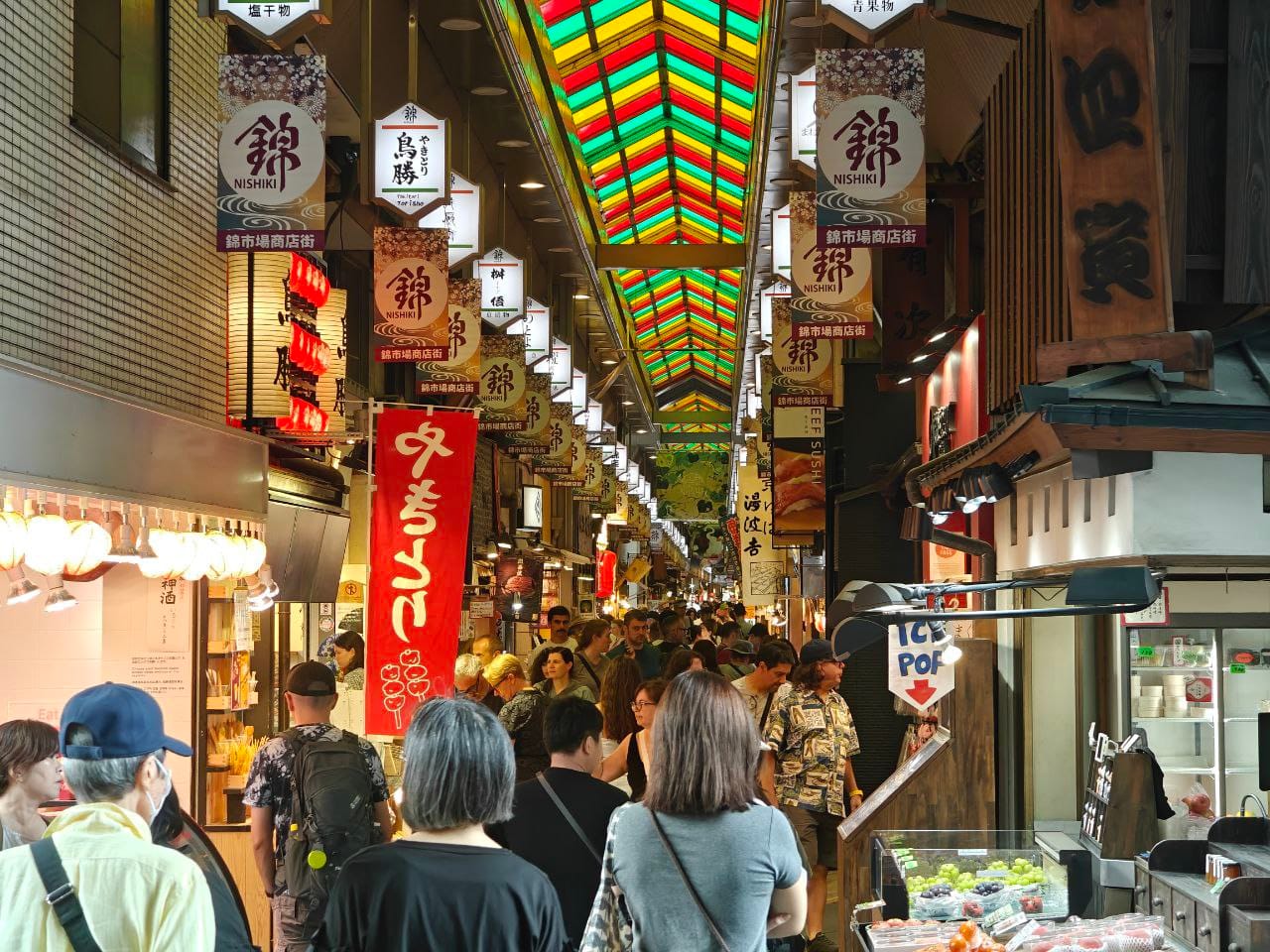
Nishiki Market is a historic retail market that runs parallel to Shijo street and is a 5-minute walk from Shijo Station. The market is fully-sheltered and about 390m long with over a hundred stores. You can find anything food-related at Nishiki Market, such as fresh and preserved food, many of which are locally sourced, as well as specialty cookware.
There is also a wide variety of ready-made food served in cozy sit-down establishments. Generally, the shops specialize in a certain type of food, for instance, grilled beef or matcha desserts. Announcements are intermittently made throughout the entire market to remind visitors to dine within the establishment, as eating while walking is often considered as poor etiquette in Japan.

The neighborhood of Nishiki Market is a busy and touristy commercial area. Apart from the higher-end departmental stores, it is also a great place for some local street food and the customary Don Quijote store visit.
All in all, we find that Kyoto is an easy city for travelers who want history and culture in a comfortable travel environment. Beyond the most popular sightseeing spots, there are still pieces of serene peace scattered throughout the city. To escape some of the crowds, consider a day trip or even staying a night at the nearby cities along the coast of Lake Biwa. If we come back again, we will definitely venture further to visit places like Hikone Castle further up the lake.
